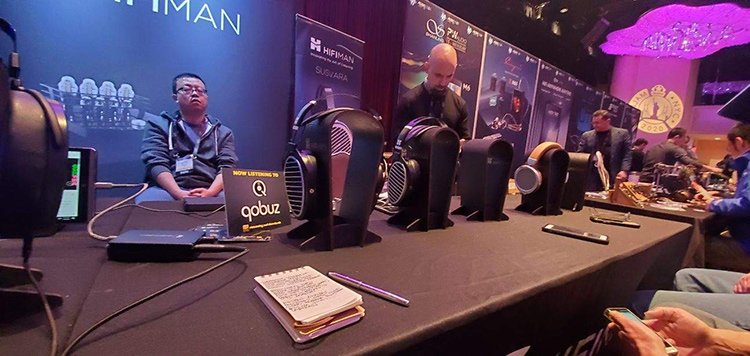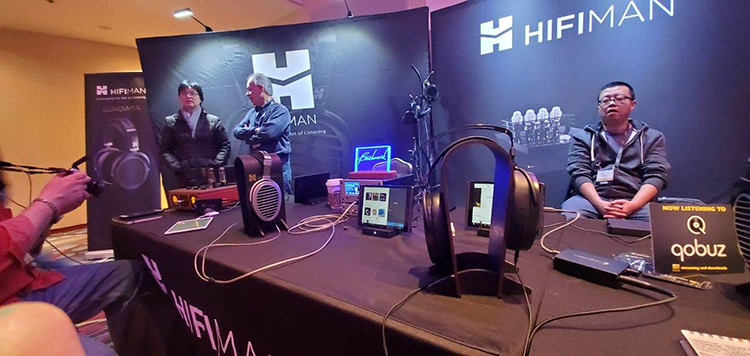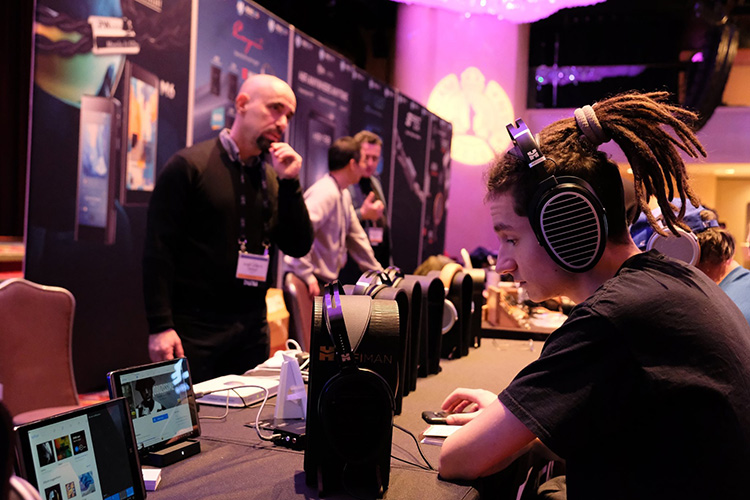We are on our way to New York City to attend CanJam NYC. This will be the first official CanJam show that I have ever attended so I am curious to see how it will compare to a regular hi-fi show beyond it strictly being about headphones. Also attending with me will be my teenage son, and occasional writer for Secrets, Peter Lo Raso. This will be his very first audio show of any kind so it will be interesting to get his perspective on things since he is particularly tuned in to personal audio. Keep an eye on the Secrets FB feed and website to see our posts reporting on what’s new and exciting in the world of headphones, right from the heart of Times Square!
Enter through the “magic doors” on the 6th floor of The New York Marriott Marquis and, like Alice chasing the white rabbit, you arrive in Wonderland!
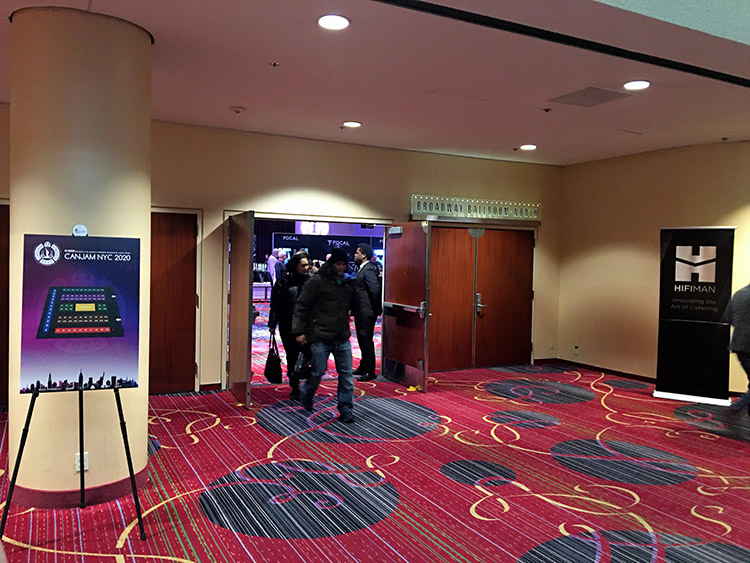

First stop on Saturday’s CanJam NYC train was at the Focal booth. They had an expansive display with all their headphone models hooked up to a variety of quality DACs and headphone amps, ready to sample. Here my son, and Secrets reviewer, Peter checks out a pair of Focal Clear headphones. They match his dreds rather nicely, no?
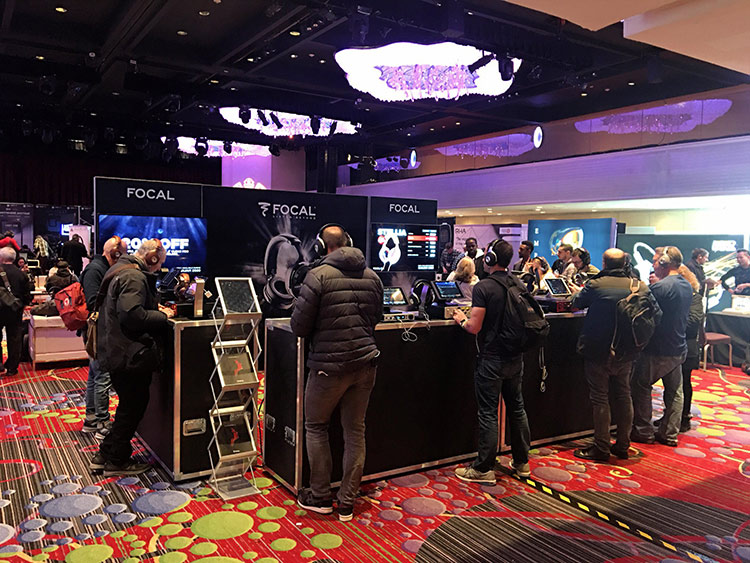
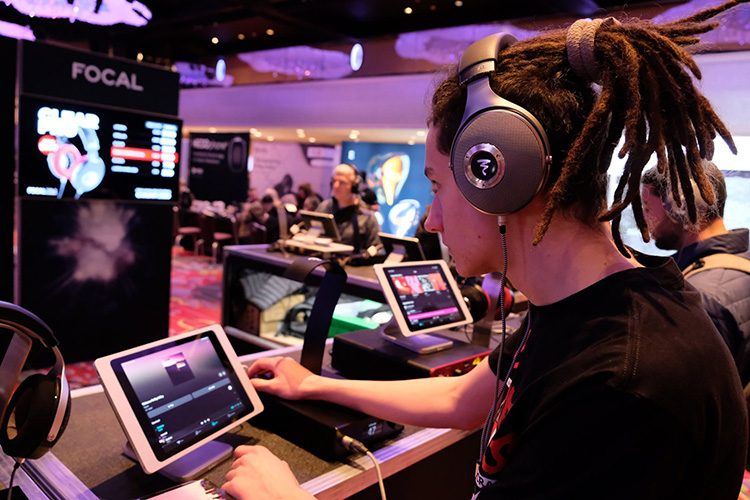
Continuing with Focal’s offerings, I sampled some tracks on the closed back Elegia hooked up to a Phonitor X DAC/AMP made by SPL of Germany. Then moving on to the open back Clear, the closed back Stellia and finally ending with the open back Utopias. The later three headphones were hooked up to samples of Focal’s own Arche DAC/AMP. For my taste, I gravitated more to the sound of the Clear and the Stellia. All were fine sounding cans but for me, the Clear had a nice level of bass for open backed headphones without sounding muddy while the Stellia, being a closed model, had equally good bass but with a more intimate and detailed presentation.
Prices are $899.00 for the Elegia, $1499.00 for the Clear, $2999.00 for the Stellia, and $3999.00 for the Utopia.
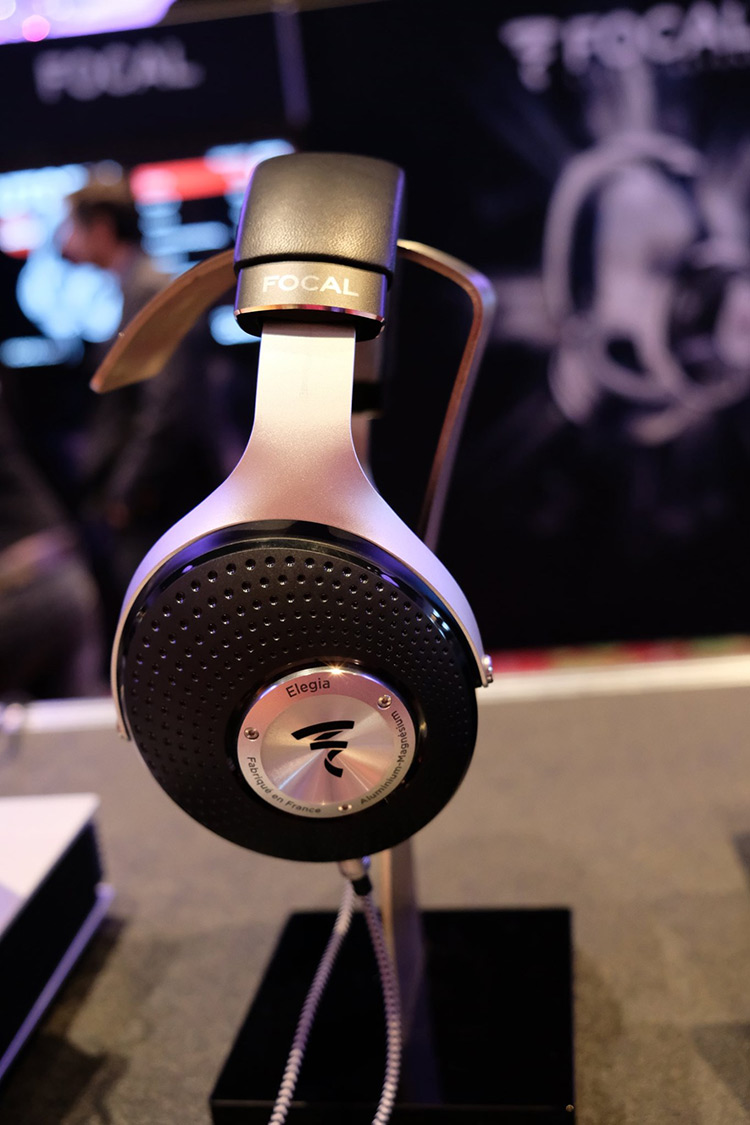
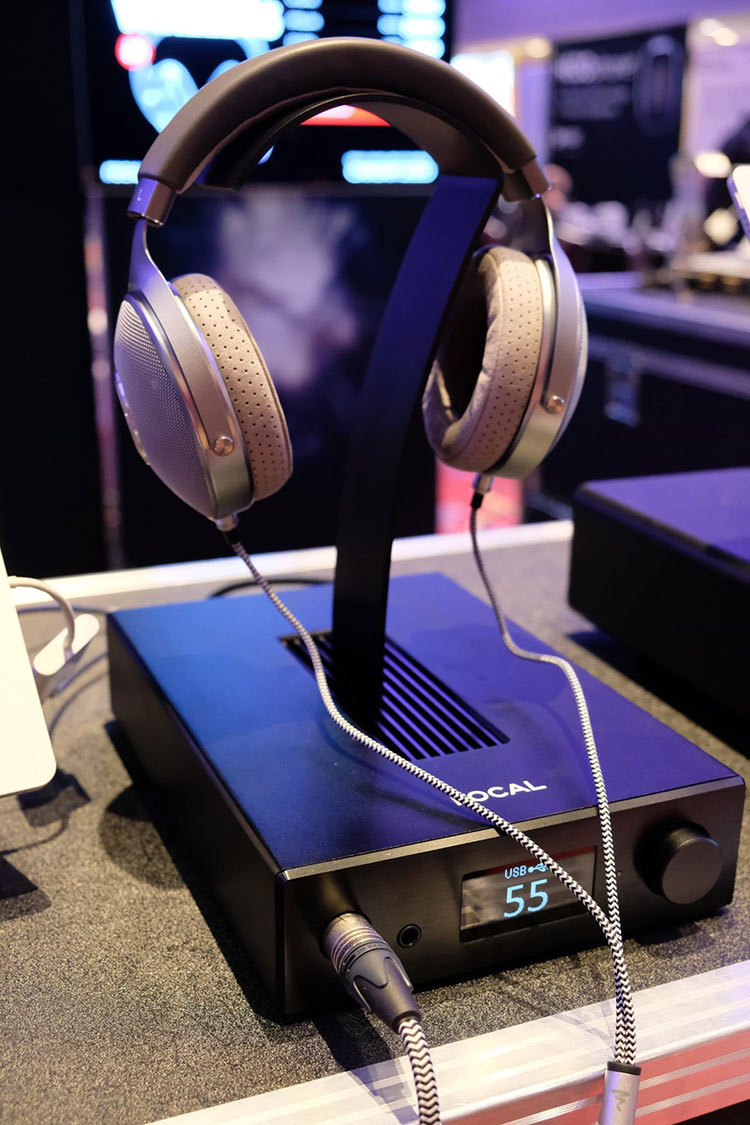



For the final installment in the Focal trilogy, I wanted to touch on their Arche DAC/Headphone amp. This solid looking unit, complete with integrated aluminum headphone perch, is a dual mono Class A design with select-able voltage or hybrid amp modes. It uses dual AKM 4490 DACs and can decode up to PCM 384 kHz and DSD 256 via the USB input (up to 24/192 kHz via Coax and Toslink). Besides digital inputs it has a pair of analog RCA inputs and both RCA and XLR outputs so that the Arche can do double duty as a DAC and preamp in your home system if you choose. Focal claims it is compatible with headphones having up to a 600 ohm impedance but the Arche also comes with a choice of impedance presets for all existing Focal headphones. More can be added in the future via firmware updates. 4-pin XLR and 1/4″ phono headphone jacks round out the features. A tidy little package for $2500.00.
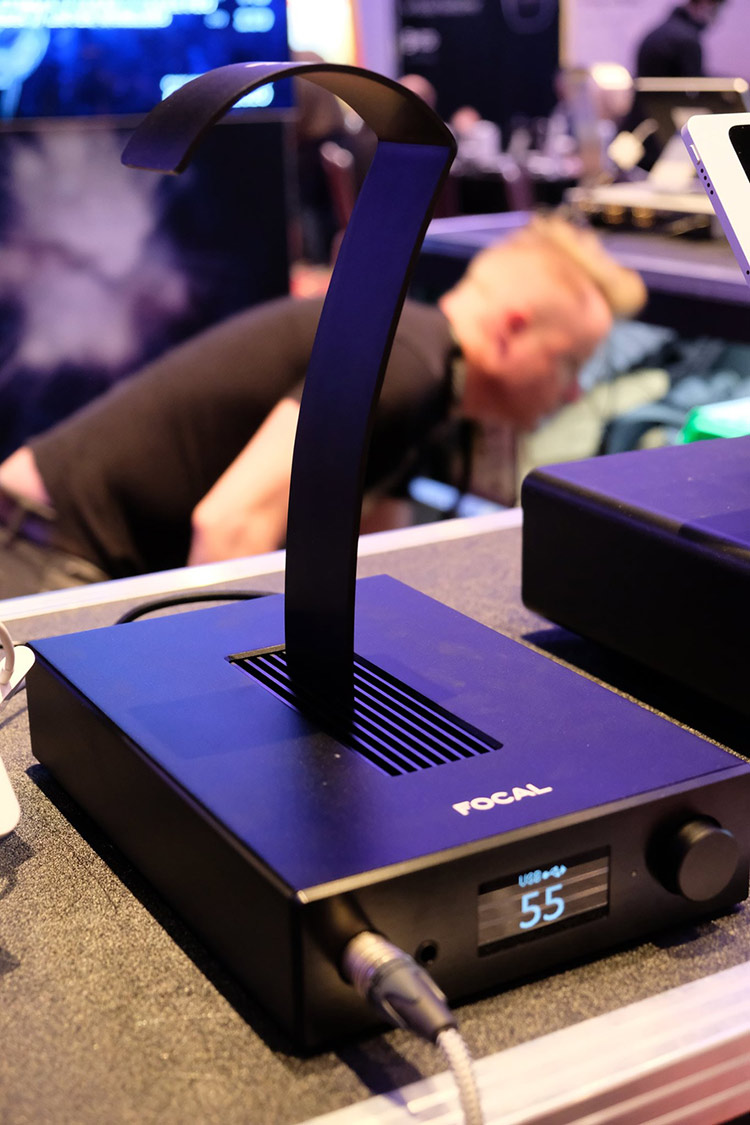

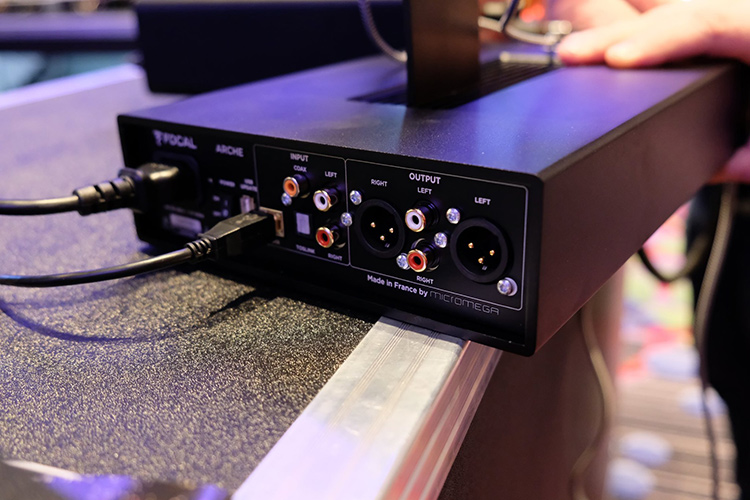
RHA Audio from Glasgow Scotland was premiering their new wireless Bluetooth IEMs called the TrueConnect. Using the latest Bluetooth 5.0 standard these little guys can hold a charge for 5 hours and can be recharged from the case a total of 4 times before the case battery needs topping up. They use 6 mm dynamic drivers for nice full quality sound with decent bass reproduction. They latched on to both my Shanling M0 DAP and iPhone without a hitch and played solidly with a good wireless connection in a room full of all sorts of wireless connections. They come with both silicone and Comply eartips in S/M and L sizes and are IPX5 water-resistant rated.Three year warranty included. A nice sounding little package for $170 bucks.
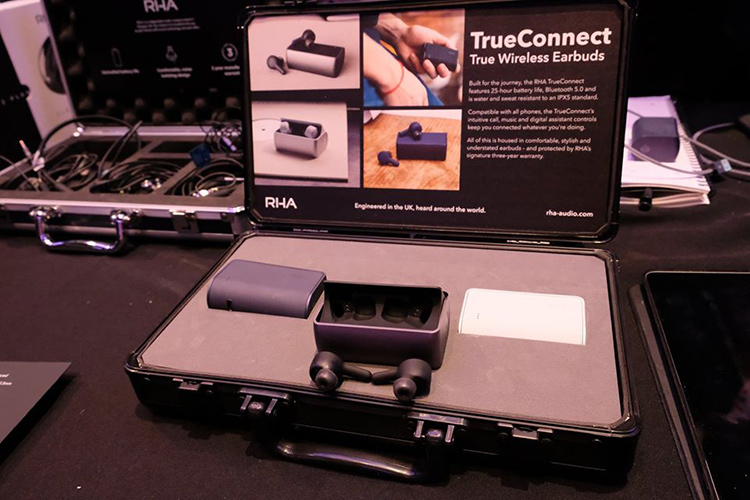
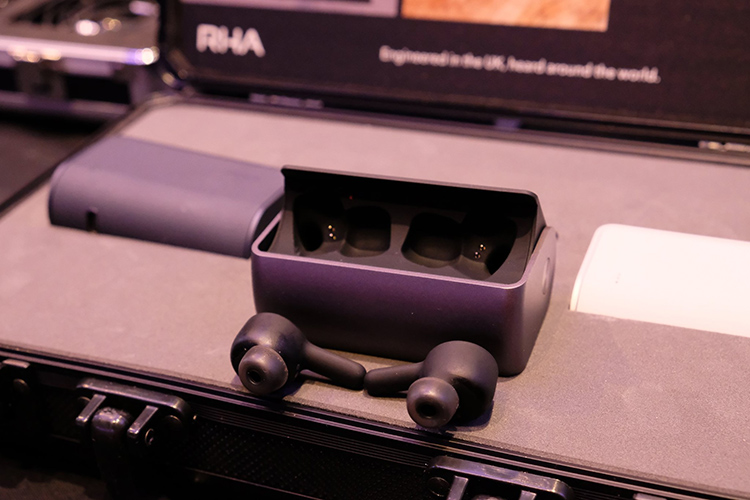

Dan Clark Audio (Formerly Mr. Speakers) was showing off their new Aeon 2 Planar headphones, available in both open and closed back variants. The company indicates that these are significant updates from the previous Aeon models in every possible way. The slickest physical trick that they pull is how the entire frame neatly collapses to an easily transportable size (with an included fitted case). From a sound quality perspective, I’ve always been a fan of the company’s headphones and these are no exception. Possessing a smooth tonal character with plenty of bass and and upper end detail for my taste, the open version are a bit more expansive while closed are more focused as one would expect but it’s hard for me to pick a favorite because I liked how each sounded with different types of music. Can I have both please? Both retail for $899.00 and are available now.
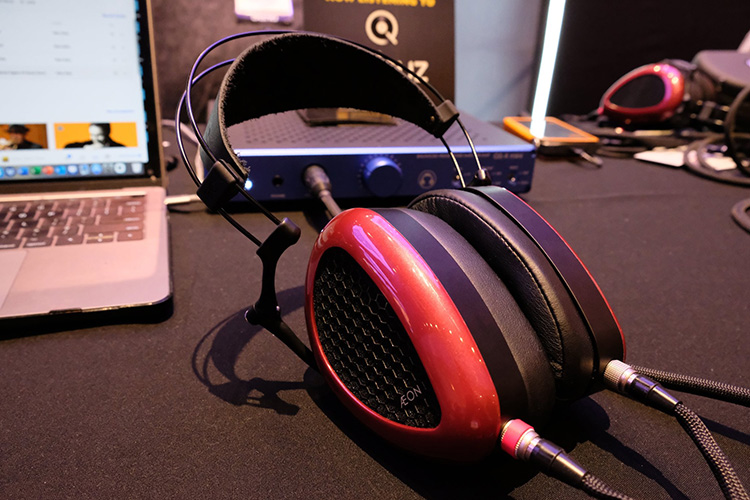
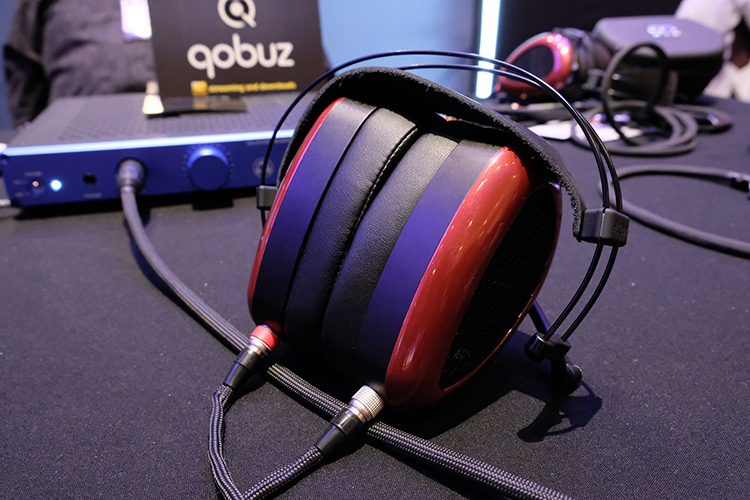
The always affable Buzz Goddard from Pro-Ject Audio USA introduced me to the new Pre Box RS2 Digital and the matching CD Box RS2 T transport. The Pre Box uses a pair of ESS ES 9038Q2M DACs in a dual-mono setup, supports input sampling rates up to 32-bit/768 kHz PCM and DSD512 via USB (24-bit/192 kHz via Coax and Toslink) and has full MQA hardware unfolding support. It has both balanced and unbalanced analog inputs and a high quality ALPS analog volume control. The output stage circuitry can be switched from solid-state to 6922 tube to suit your tastes. An unbalanced headphone output is also included.
The CD Box RS2 is a CD only transport. It uses a high quality, custom made transport mechanism designed by former Philips engineers who helped establish the CD standard. Milled aluminum assemblies and sub-assemblies with extensive vibration damping are incorporated with the output fed through a custom i2s connection to the Pre Box. The goal being to keep jitter to the absolute minimum. Both units come in beautiful matching aluminum casework. An MQA encoded CD played through the system and listened to on a pair of Dan Clark Audio Aeon 2 headphones was delightful. Price and availability TBD.

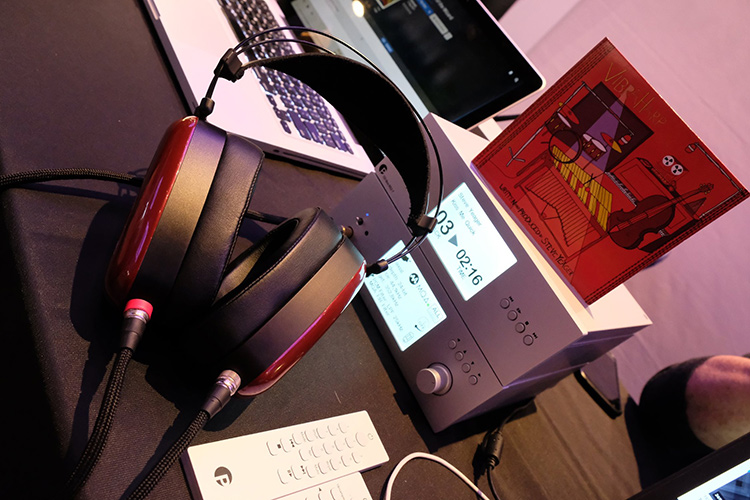


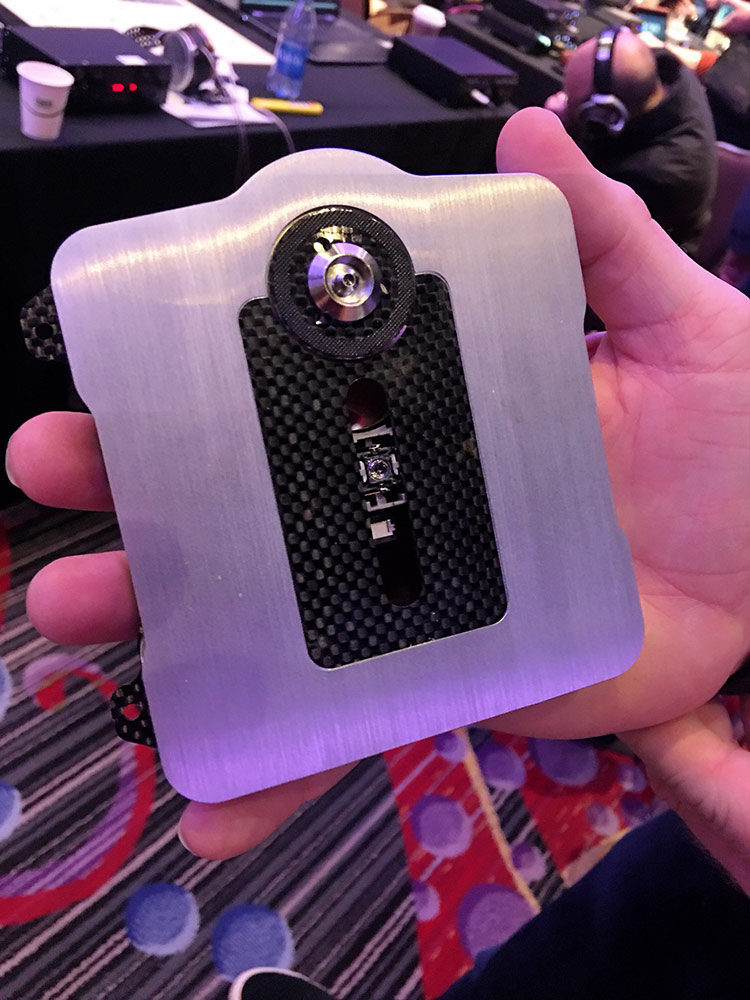
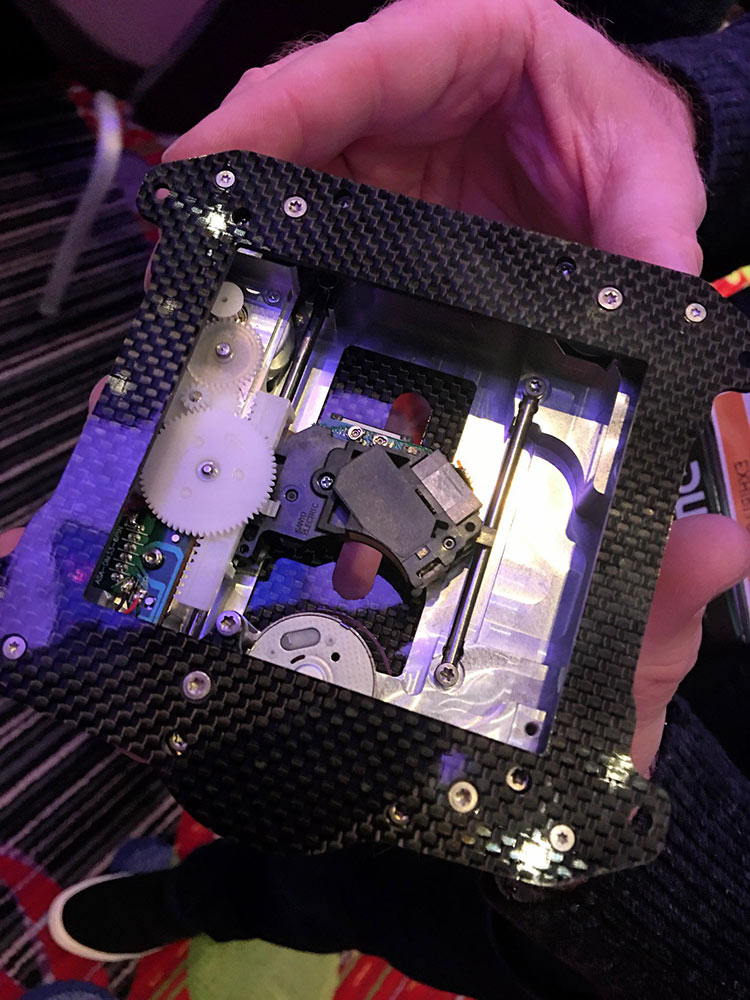
I got to attend a private meeting with HiFiMAN’s Dr. Fang Bian in one of the Marriott’s hotel suites, away from the noise and crowds of the show floor, in order to be introduced to the newly released Deva wireless Bluetooth Headphones. The Deva differ from other wireless BT headsets in that the amplifier and DAC electronics are housed in a removable black dongle that connects flush to the headset via a standard 3.5 mm jack. This means you can remove the dongle and use the Deva as a standard set of passive headphones if you choose. HiFiMAN claims the Deva’s planar driver technology trickles down from higher line Susvara model while the active components are based on the Ananda-BT. Compatible with AAC, aptX-HD and LDAC Bluetooth codecs, the Deva’s dongle also accepts a USB-C cable connection to computers and smartphones as well. MSRP is said to be $299.00 for the Devas and availability will be soon. I had a chance to directly compare the sound of the new Devas to the $1000.00 Ananda-BT headphones which I had not heard before. The Ananda’s had a lot of the sound qualities that reminded me of HiFiMAN’s HE1000 V2 model that I continue to use a s a reference headset. Open, spacious sound quality with a lovely airy detail in the upper mids and highs that isn’t abrasive at all, with solid, impactful bass response. Putting on the Devas and listening with the active dongle was an eye-opening experience. Light, and comfortable to wear, the sound quality, while not a carbon copy of the Ananda-BT was, in my opinion, dangerously close. If this is indeed the final production tuning then HiFiMAN’s new Deva headphones will be a screaming good value for their price. Impressive stuff with attractive styling to boot!
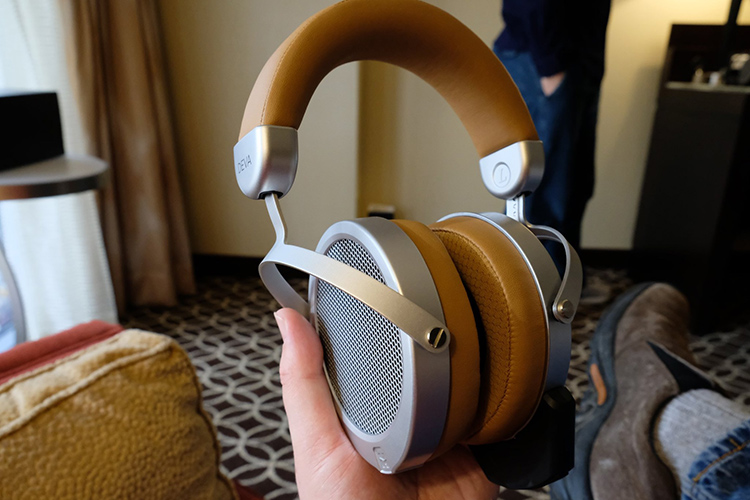
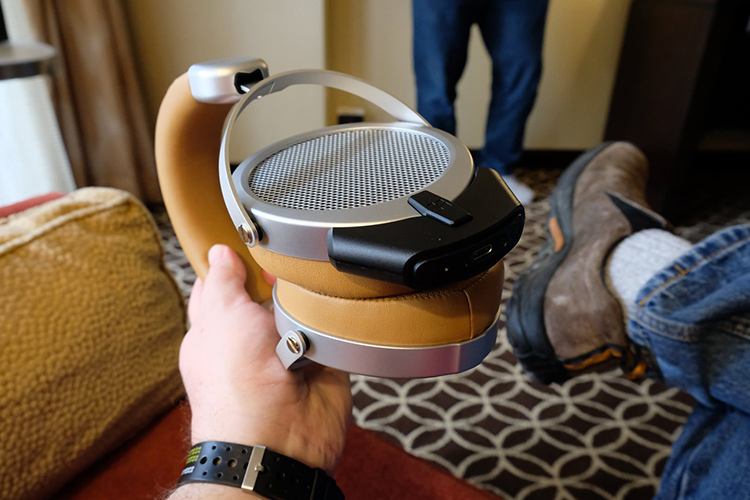
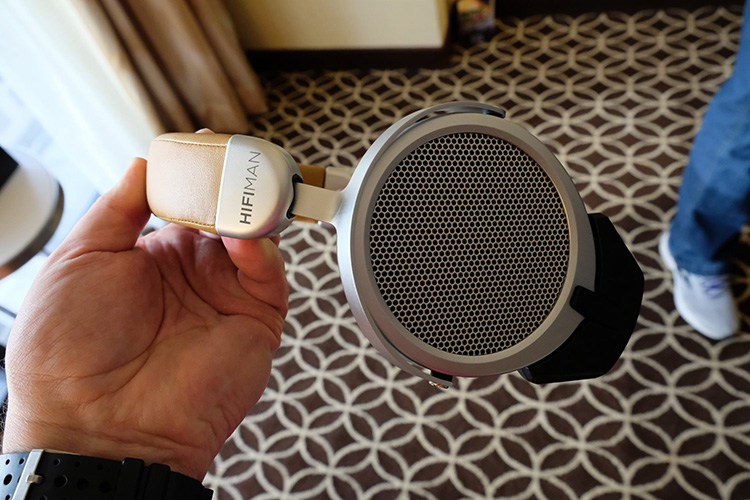
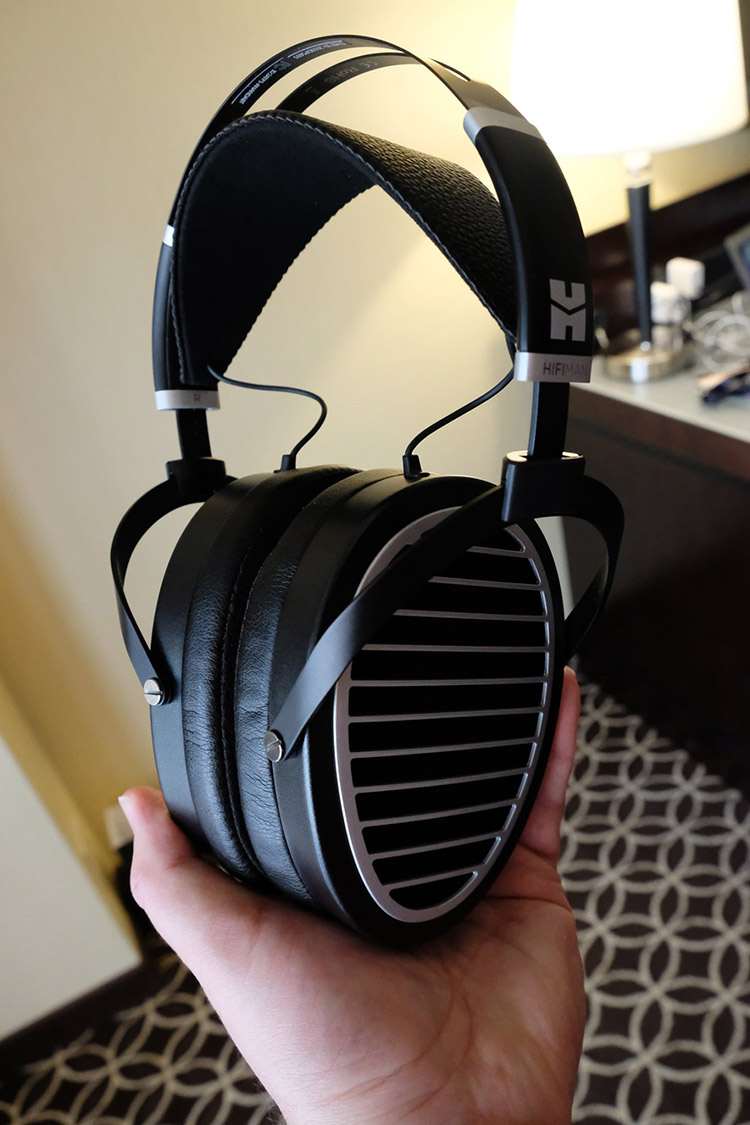
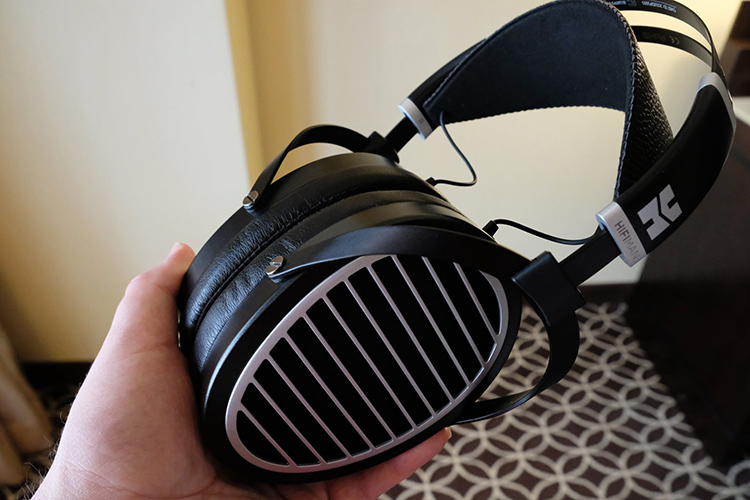
During my meeting with HiFiMAN’s Dr. Fang Bian he allowed me to experience his take on electrostatic sound via the Shangri-La Jr headphone amplifier connected to both the matching Shangri-La Jr electrostatic headphones and the original Shangri-La electrostatics. All I could say was “Wow!” Airy, effortless sound for days!
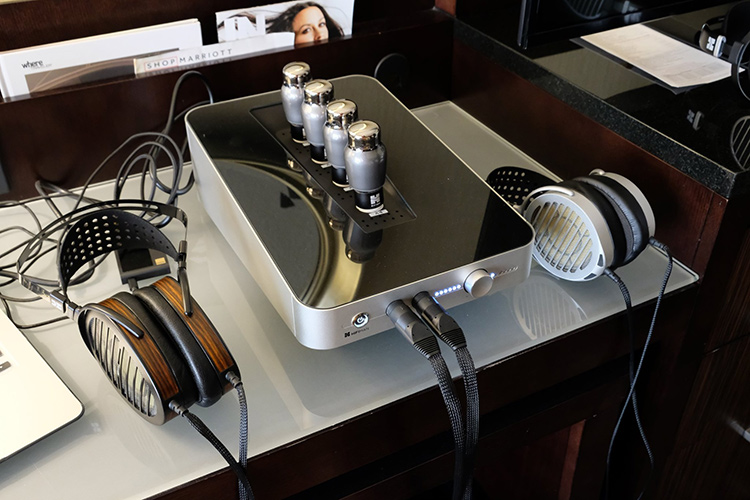
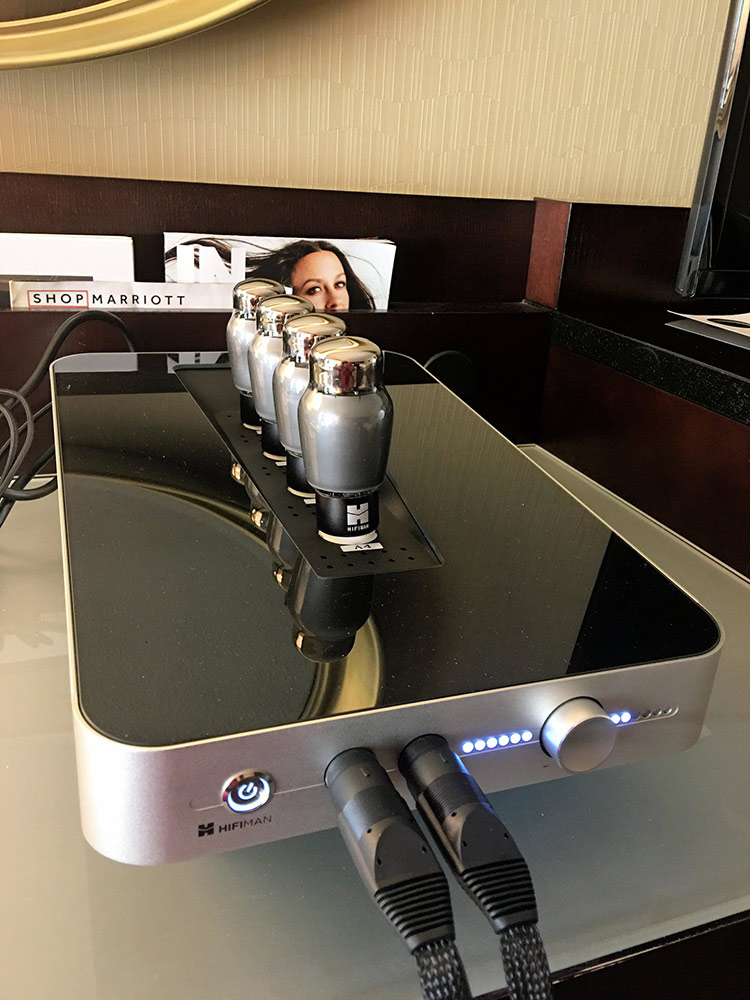
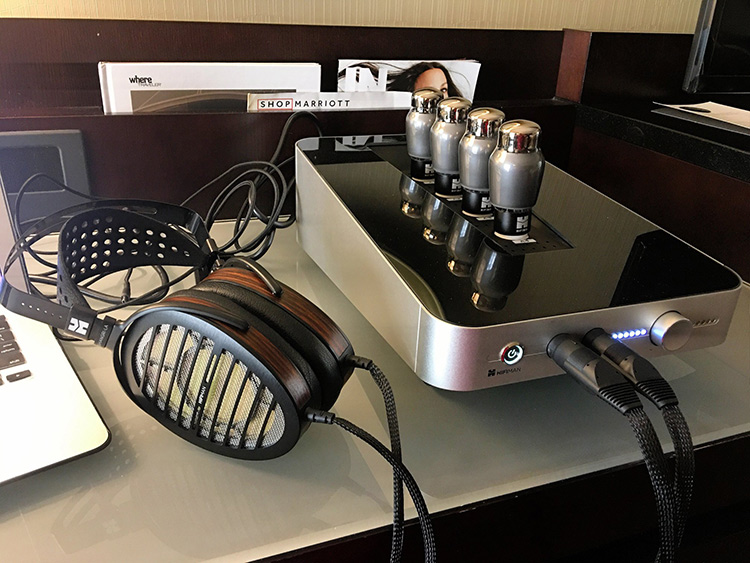


I dropped in on the fine folks at NAD, PSB and DALI as they are all under the umbrella of the Lenbrook Group and were all right next to each other at CanJam NYC. PR guru Peter Hoagland introduced me to the extremely jovial Nicolaj Hansen CCO of DALI and we chatted about many things audio related, and also surprisingly enough, about comic books, but that’s another story. DALI’s big news at CanJam is the launching of the iO-4 and iO-6 wireless noise cancelling headphones which you see hanging behind Nicolaj and Peter. I am in the process of completing a full review of the iO-6 which I’ve been examining for the last little while. My initial preview posted before the show and it is quite favorable. Stay tuned to Secrets for the full story coming soon. DALI also had this little “Danish Pop-Up Virtual Reality experience” which was pretty fun to check out.
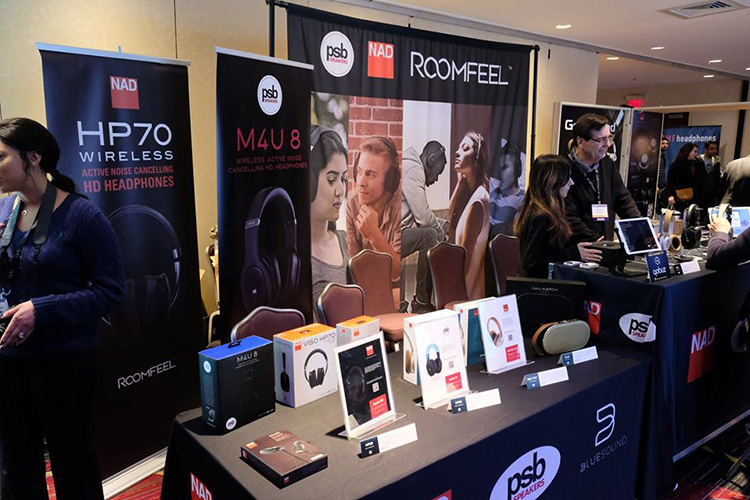
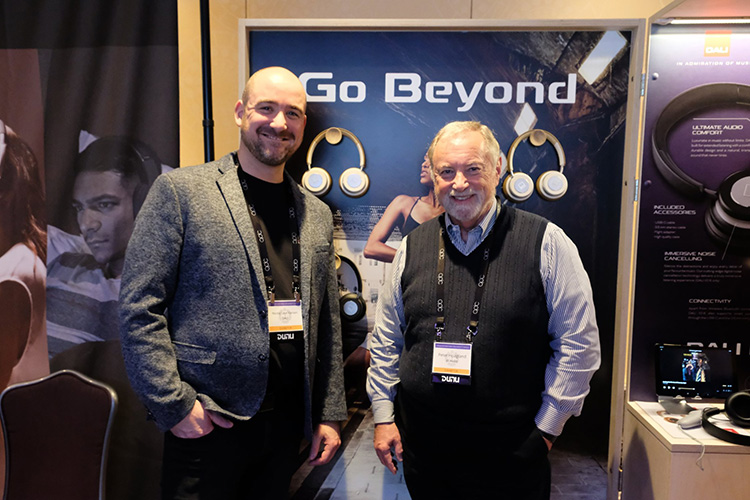
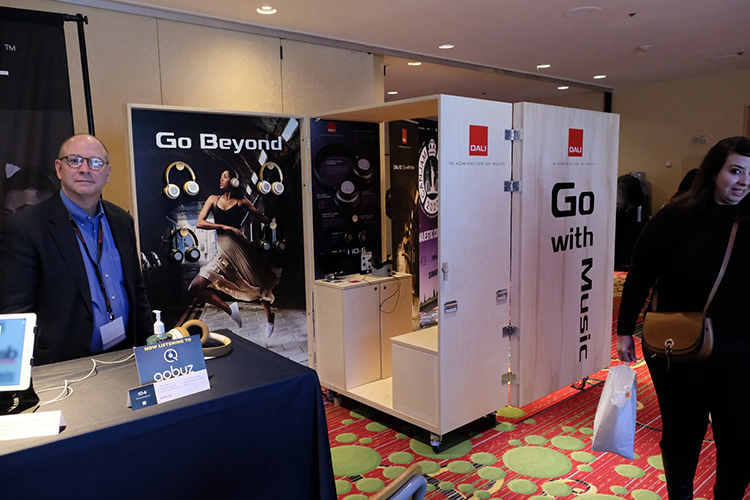
Stopped in to the Audio-Technica booth where I had a chance to listen to 3 new headphone models and a familiar reference model. All the headphones were powered by an unfamiliar Audio-Technica headphone amp the AT-HA5000. Apparently the amp is a Japan only model. First the ATH-AWAS closed back head phones with 53mm drivers and pretty Japanese Cherry wood earcups. The next is the AT-AWKT, also closed back, they use Japanese Ebony for the earcups (sorry no image). The third was the smaller, more affordable, ATH-WP900, also closed back and with flame maple wood earcups. All three new headphones were comfortable and had the same smooth basic character but different response tunings. The Cherry wood model overall seemed a little more to my liking. I have to say though that the ATH-ADX5000 still is my favorite of the Audio-Technica headphones that I listened to. It’s overall balance and open back spaciousness were just right for me. Prices are: ATH-AWAS – $1399.00, ATH-AWKT – $1899.00 and the ATH-WP900 – $650.00. The ATH-ADX5000 retail for $19990.00.
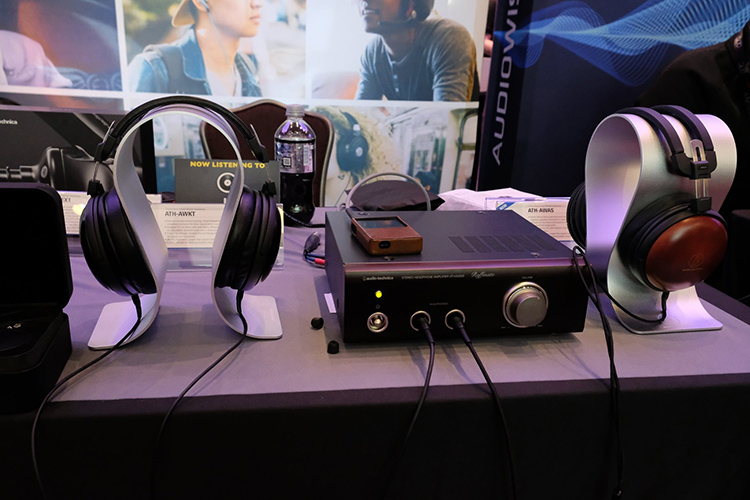
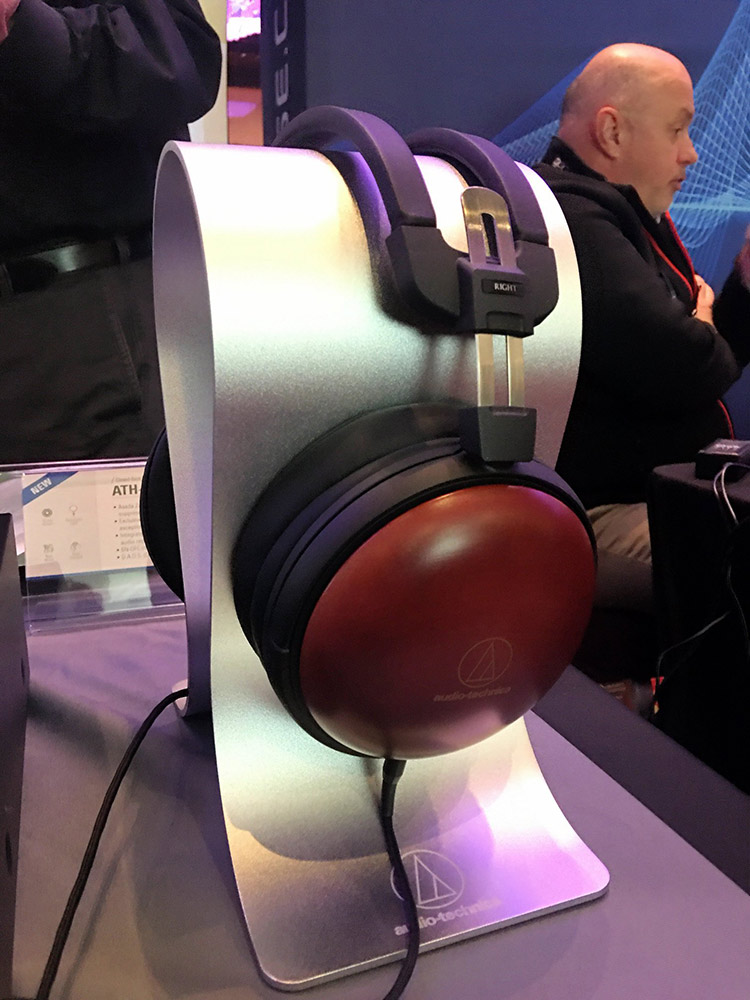
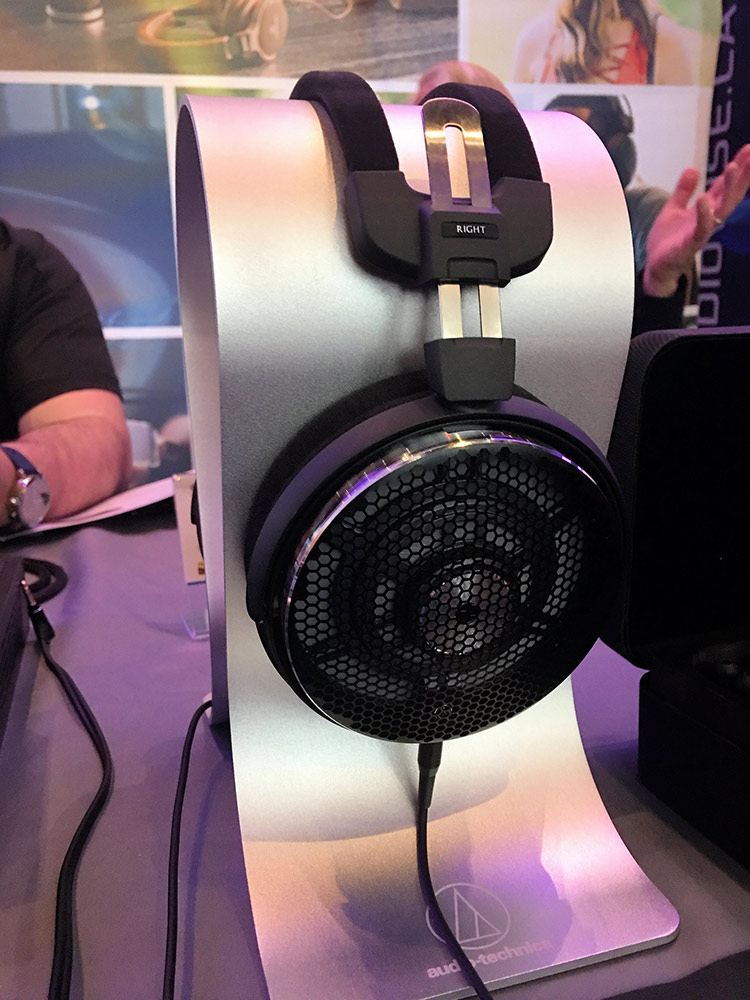
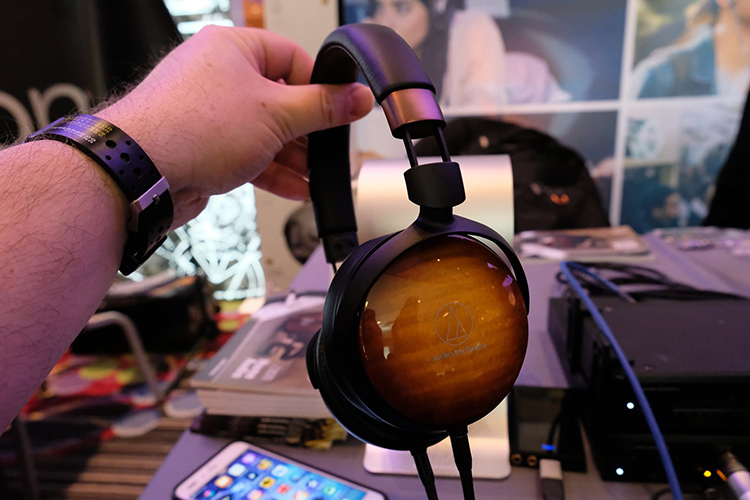
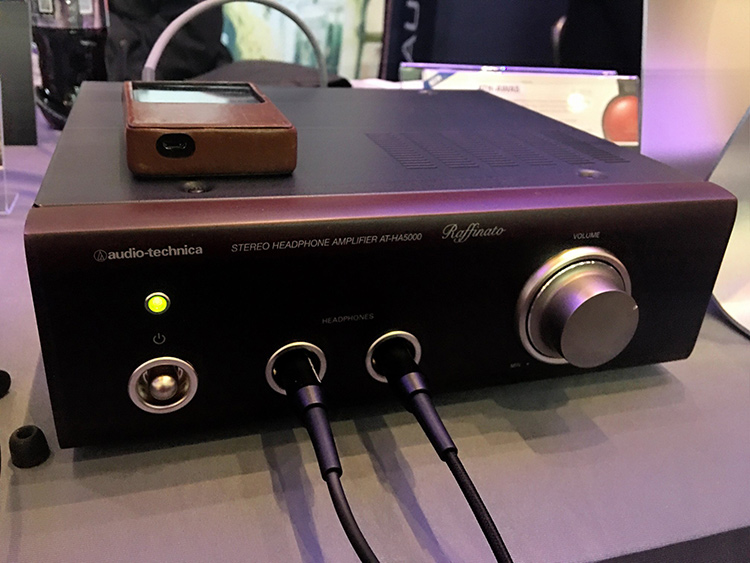
ZMF headphones had a great display in a separate room off from the main area with a large sampling of their headphones with various species of amplifiers. The first thing that obviously catches the eyes with ZMF’s creations are the earcups made from beautifully grained and figured woods. I had a chance to sample their Verite headphone in both open and closed versions along with another closed version that was using a stabilized wood process. The Verite use vapor deposited Beryllium drivers and both the open and closed versions shared a rich, full sound quality with good bass reproduction and a smooth sounding treble. I want to say that the lower midrange to upper bass area was perhaps a little too full sounding for my tastes on both versions. The open backs naturally sounded more diffuse while the closed were more immediate. The closed back version with the stabilized blue tinted wood (stabilized Maple Burl) had less of the fullness that I mentioned in the other two and so was more to my liking overall. The finish was also really striking. The photos show both the stabilized blue and another stabilized purple model. Power was provided by the $4950.00 Bigger Ben all tube headphone amp by Ampsandsound. Both models of the Verite headphone retail for $2500.00. The price on the stabilized wood version is TBD. All headphones come with a lifetime warranty on the drivers.
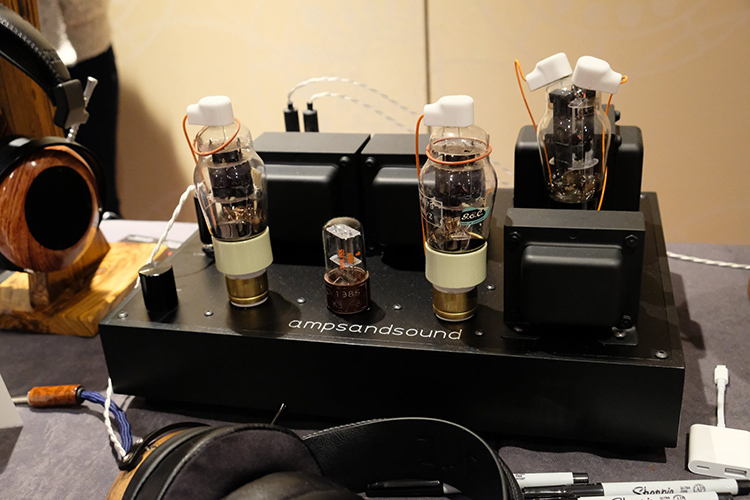
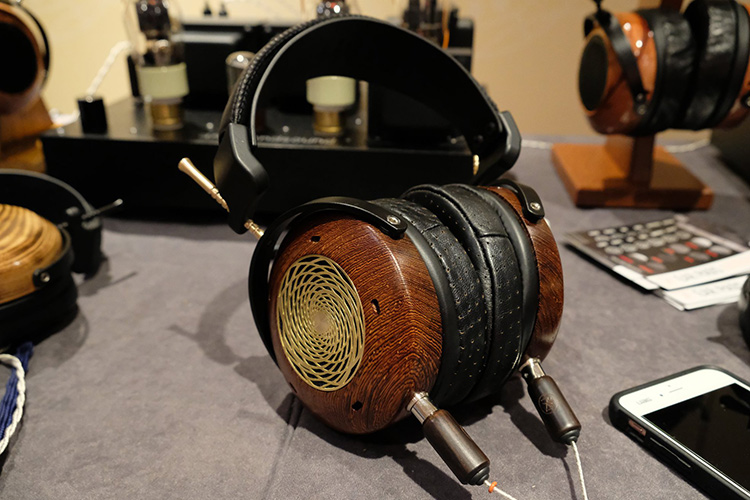

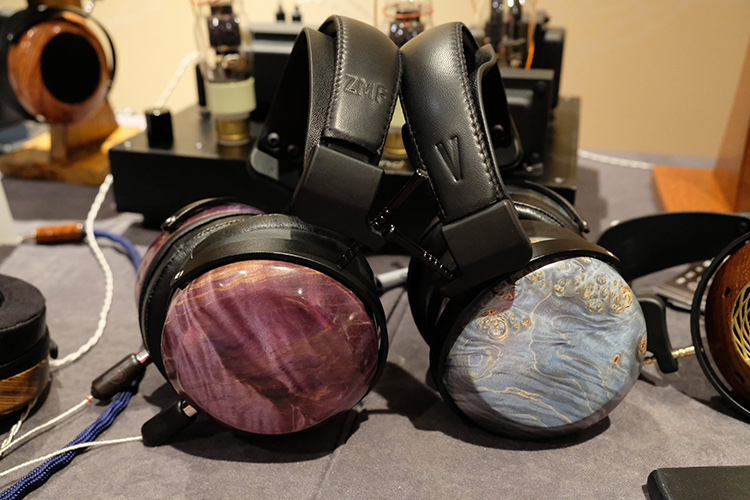
Campfire Audio of Portland Oregon had a display table with a full array of their IEM’s. I elected to sample their brand new Solstice and Equinox custom fit IEMs. Both models begin with an impression of a customers ear to produce the exterior while the interior has all the chambers and porting digitally optimized and organized to work best within that impression. The result is then 3D printed in one piece. Both are available with various custom cable options and two different fit options. The “Audiophile” fit is claimed to have a more shallow seal depth with less intrusion into the canal and is more suited to everyday use while the “Artist” fit has a more traditional seal depth for added isolation and less chance of coming loose. This fit is more suited for the on-stage musician.Where they differ is that the Equinox uses a single 10mm dynamic driver to cover it’s frequency range while the Solstice uses an array of 5 Balanced Armature drivers instead. In my brief listening I found the Solstice to have a more analytical and leaner presentation while the Equinox had bass impact to spare. I’d be interested to spend more time with them to hone in on more of the details of their sound but I would need to get impressions made of my ears and have a pair custom made to truly judge them fairly. Each have an MSRP of $1499.00.

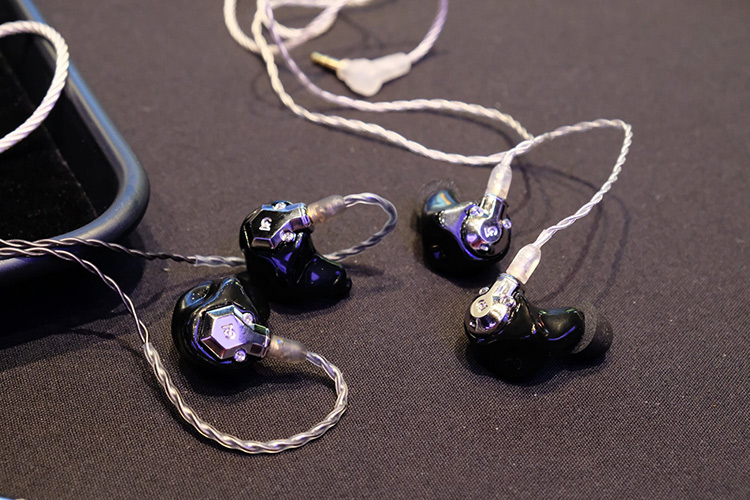
Unlike Campfire’s Solstice and Equinox, the Solaris Special Edition do not need custom ear impressions made for them. Based of the standard Solaris’ driver compliment of 3 BA and 1 Dynamic driver, the Special Edition incorporates custom tuning and interior porting made in 3D printed ceramic.The attractive real Abalone inlay rounds out the special-ness of it all! Listening to the Solaris SE was a exceedingly enjoyable experience. They sealed quickly and easily in my ears and the sound had everything I look for in an IEM.Great vocals within a solid midrange, High frequencies that are sooth yet detailed and solid and impactful bass without getting overpowering.These had them all and it’s a shame they are limited to only 750 pairs. MSRP is $1899.00. Check them out if you can. They look and sound quite special.
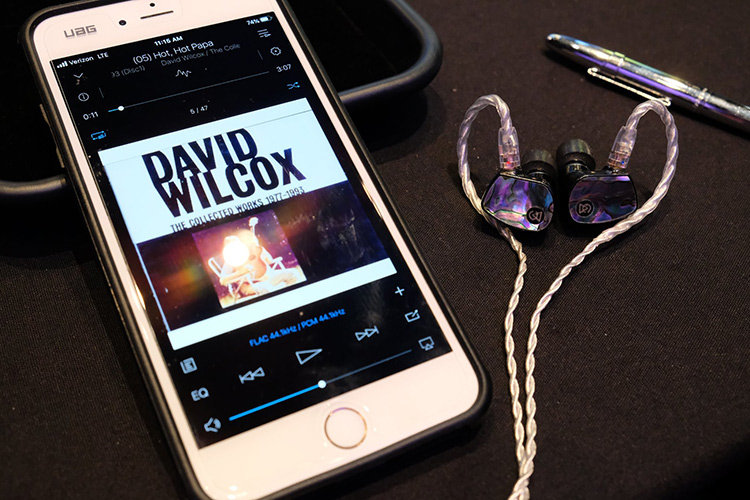
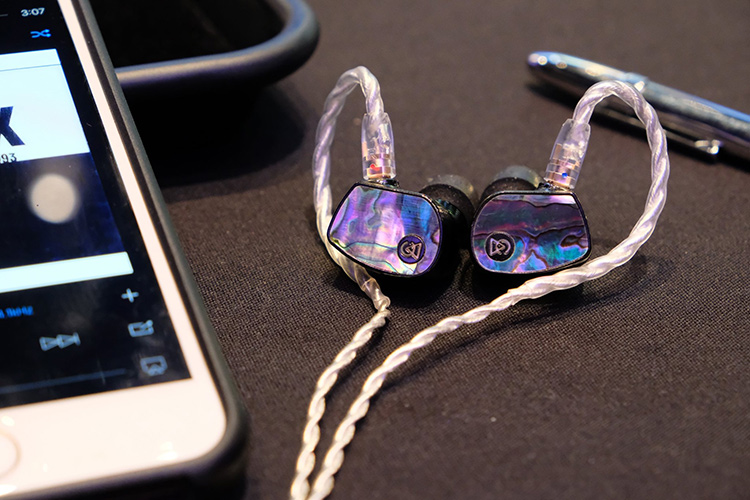
Meier Audio is a small independent German company created and owned by Jan Meier, a physicist in biomedical engineering by trade. Mr. Meier is one of those folks who had the crazy idea of taking his hobby and turning it into a viable business. Meier seems to have made some relative success at this endeavor as his website offers a number of headphone amplifier options that focus on high quality and value for the money. At CanJam NYC Jan has taken a different approach and introduced his version of a price-no-object DAC/AMP combo called the Corda Soul. Meier’s creation, besides being a capable looking DAC/AMP unit with dual mono Wolfson WM8741 DAC chips along with other equally capable parts, has an adjustable crossfeed circuit, an array of tone controls with shelving, and a notch filter. Whats more all these features get implemented in the digital domain via a 64-bit DSP chip. The idea behind this is that a headphones response can now be tailored with excellent precision and any annoying resonances the headphones posses can be filtered out. Jan Meir conducted a little demo for me with a pair of Sennheiser HD800 headphones. First listening to them straight/unaltered through the Corda Soul, and then again after he adjusted the shlevig/tone controls, notch filter and crossfeed to his recommended settings. Now the HD800 had a level of smoothness to it’s output that I found intriguing. It certainly sounded for the better to my ear. Other features are two balanced headphone outputs. One with a fixed impedance of 120 ohms and the other with an almost zero impedance. Balanced analog inputs and outputs allow it to be used as a preamp in a home system and all digital inputs accept only PCM signals up to 24/192. DSD need not apply.. There is more but I’ve said plenty enough. MSRP is $3900.00 and is sold direct through Meier’s website.
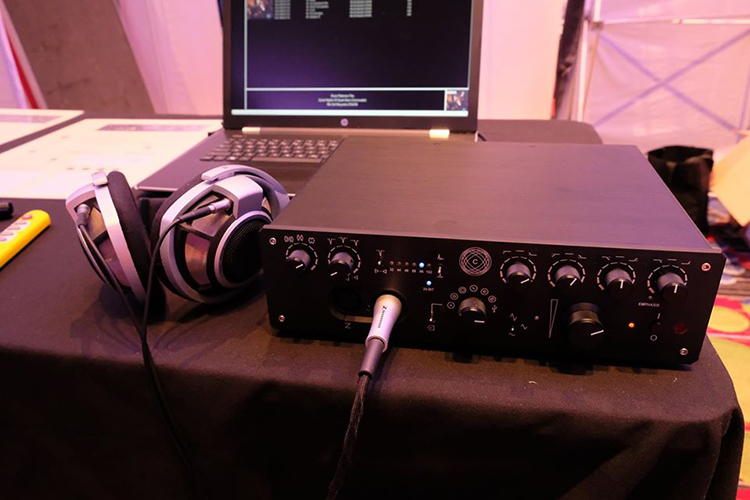
HEDD (Heinz Electrodynamic Designs) introduced what I can only describe as the largest and perhaps most unique pair of headphones that I have ever come across. Called the HEDDphone, each substantially padded earcup houses a custom full range AMT (Air Motion Transformer) driver. These drivers are known for their speed and delicacy in treble reproduction when used as tweeters in loudspeakers, but HEDD has developed and refined this design for full range use in these spectacularly over-the-top headphones.They surely aren’t the lightest headphones in the world but they are very comfortable and my listening to some varied genres of music revealed that these headphones are not a joke. Top to bottom they sounded quite impressive, Certainly in the league of some of the better planar driver headphones that I’ve heard. I would be very interested to get a pair of these in for review and delve into their sound qualities further. They certainly give the phrase “Big-Ass-Cans” a run for it’s money! MSRP is $1899.00 with availability in March.
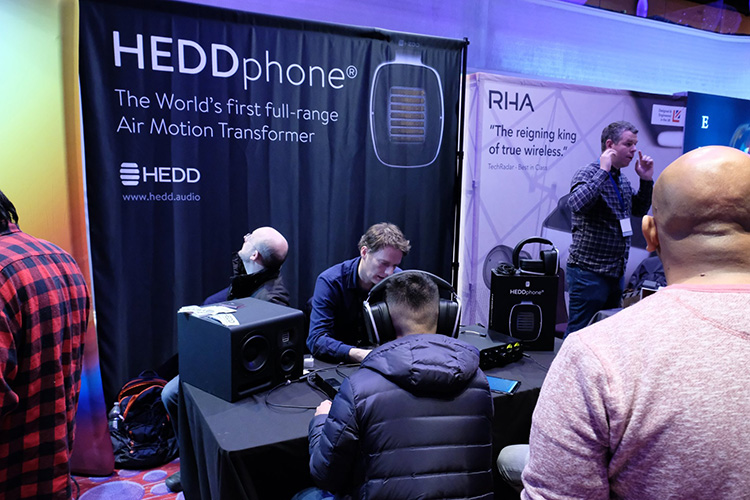
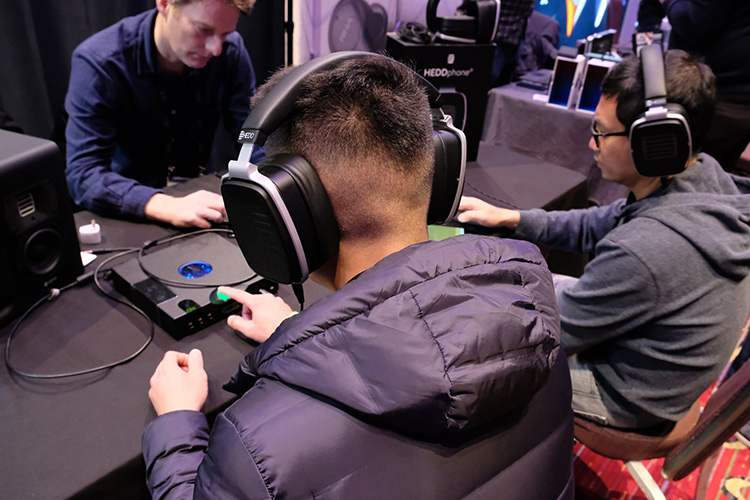

While at CanJam NYC I visited the AME Custom booth to sample what was new and exciting. Having never heard of AME Custom before I discovered that they are from Korea and started out as a small custom shop selling to the local market before expanding worldwide via the interwebs. They like to highlight the use of electrostatic drivers and also make a point of noting that they tune their IEM designs to a target curve based on the research performed by Sean Olive, Todd Welti and Elizabeth McMullen from HARMAN. I first tried out their Argent IEM which uses 4 balanced armature drivers (2 for bass, 1 mid and 1 high) and 2 electrostatic drivers for high and ultra-high frequency bands.The clear casework with the Abalone trim certainly looked striking and I found the sound quality to be equally so. Good overall balance with decent bass and airy highs. Price is $1200.00 for the universal-fit version, with custom-fit costing an extra $150.00.
Next up was the Radioso which uses a single dynamic driver for the bass, 1 balanced armature driver for the mids and 4 EST drivers for the high and ultra-high frequencies. Their sound shared much of the same qualities of the Argent but with more impactful bass. I particularly liked these. Price is also $1200.00 plus $150.00 more for custom-fit.
And finally I sampled AME’s IEM play for the affordable market. Simply called the J1U, the single dynamic driver IEM was an early production sample that they brought to the show to get feedback from attendees. The target price is in the $100.00 range and availability should be by end of March. For a $100.00 IEM I found the sound quality to be impressive. The J1U had great bass impact and a bit of a brighter middle to upper frequency range. All of AME’s offerings seemed nicely put together and came with quality cabling.
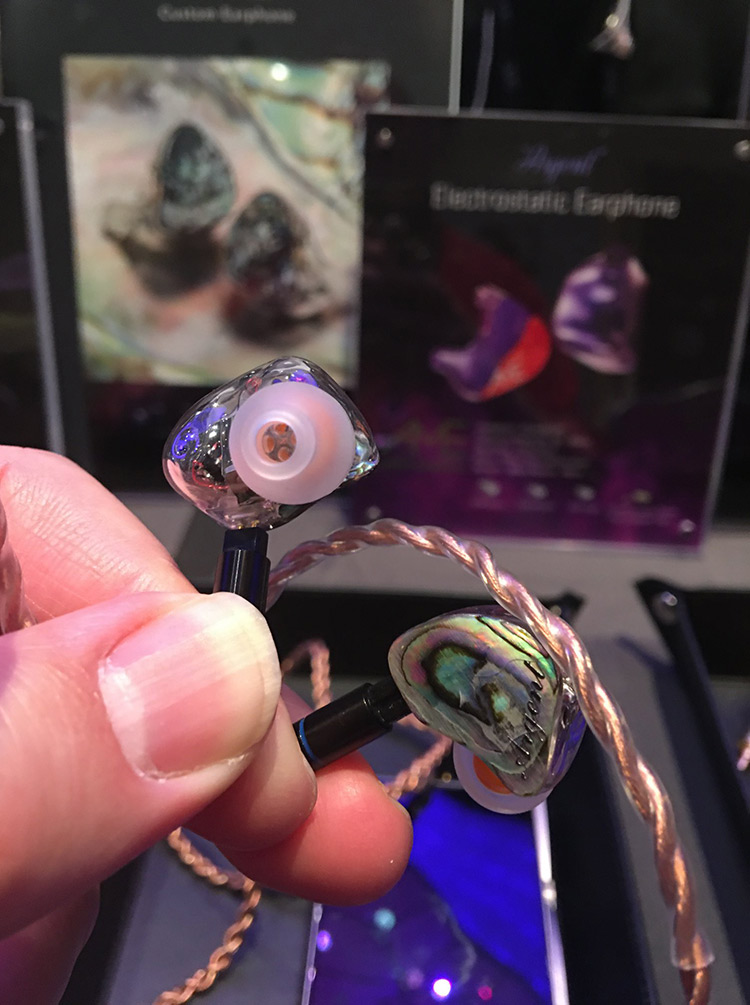
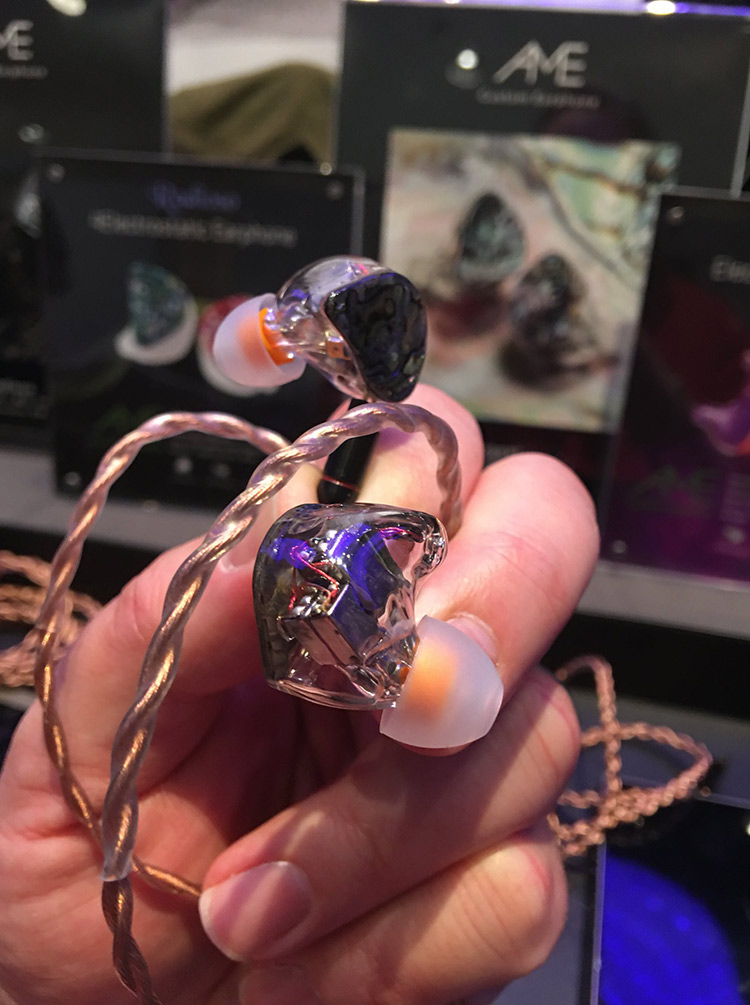
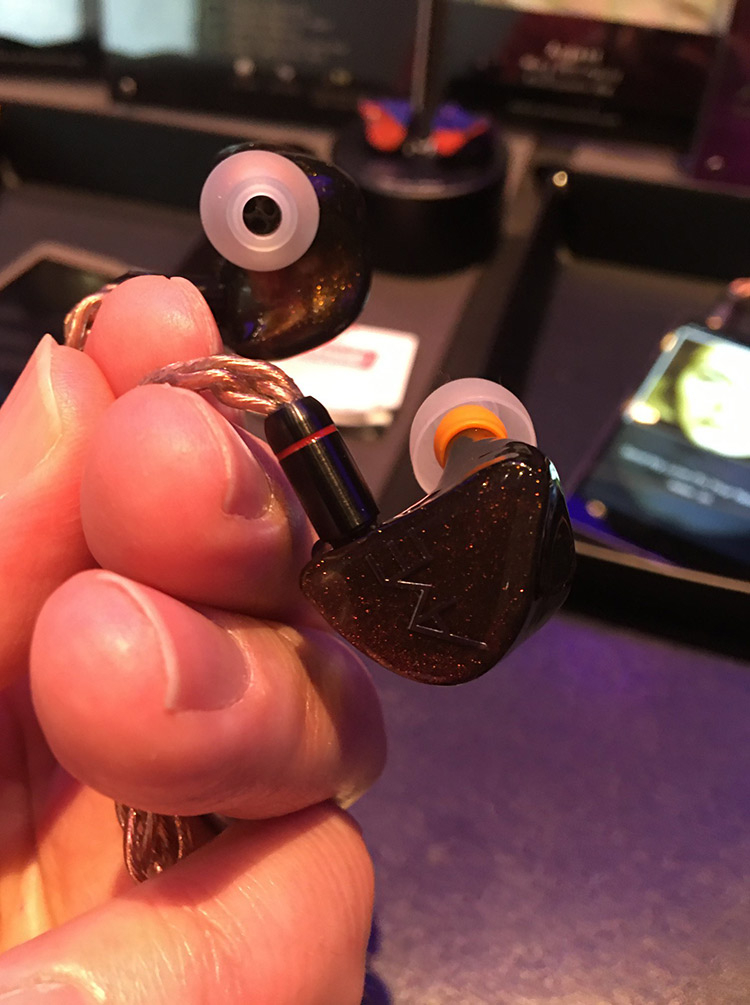

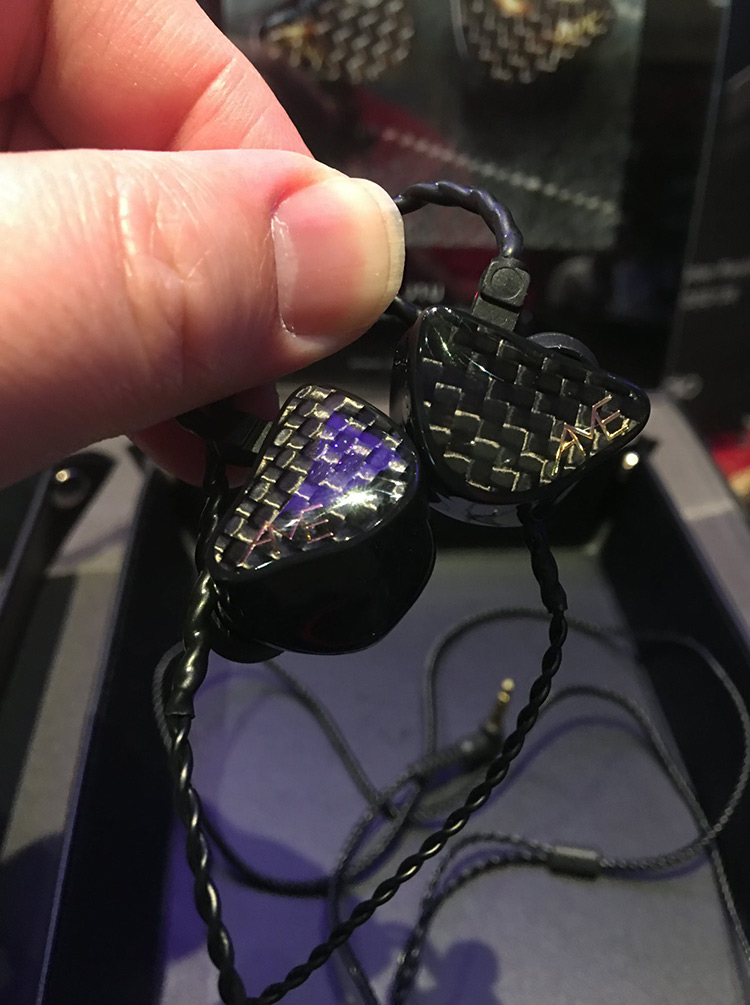
Meet the guys from Spin-Fit. They make really nice fitting silicone ear tips in a variety of sizes. They are also very funny!
Getting a good seal when fitting an IEM is everything and I have a hate-hate relationship with most silicone ear tips that I’ve tried. Spin-Fit make two sizes of tips that work perfectly for my ears providing a perfect seal almost every time. A number of exhibitors were using their ear tips which made my ear canals happy. Give them a try!
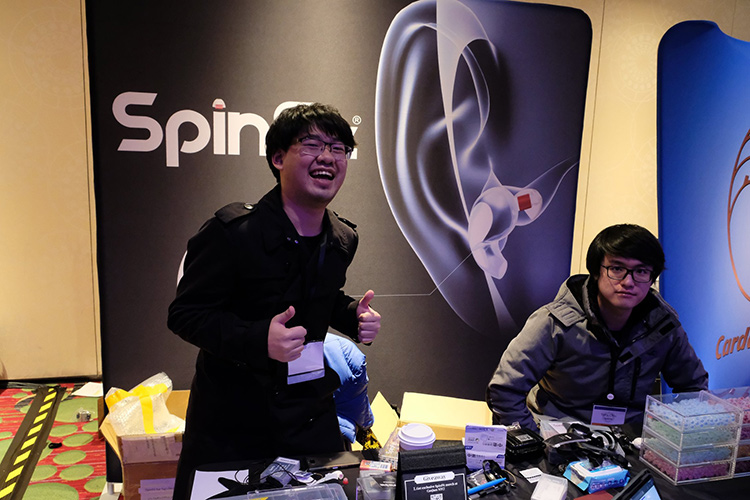
I remember when I first saw a pair of Stax headphones as a teenager in a nice Hi-fI shop in downtown Toronto. I had never seen headphones that required their own special amplifier before. They looked very serious and, at that time, very unattainable. Fast forward to today and I still get the impression that putting on a pair of Stax headphones (or Earspeakers as they call them) is a rather special treat. At Stax’s display I got to try out the new SR-009S flagship headphones along with the new SR-L700Mk2 Lambda headphones, both hooked up to the new SRM-700S solid state amp. The amp was able to drive both headphones simultaneously without breaking a sweat so I was able to quickly switch back and forth between the two. Both were very comfortable and made music sound incredibly effortless and natural. I felt that the SR-009S had a little more bass impact than the new Lambda but both were surprisingly close in overall sound quality to me. I’m also partial to the classic Lambda styling for nostalgia reasons. The best planar headphones come close but there is still something special about the sound of an electrostatic headphone. Price for the amp is $3400.00, while the SR-L700Mk2 cost $1569.00 and the flagship SR-009S costs $4325.00

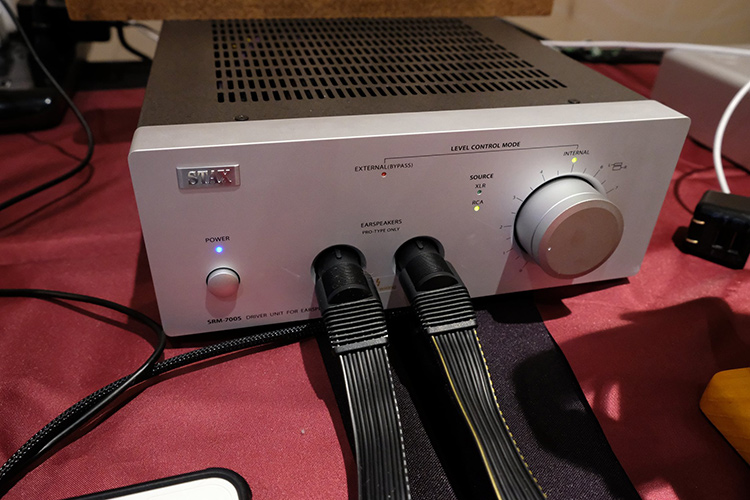
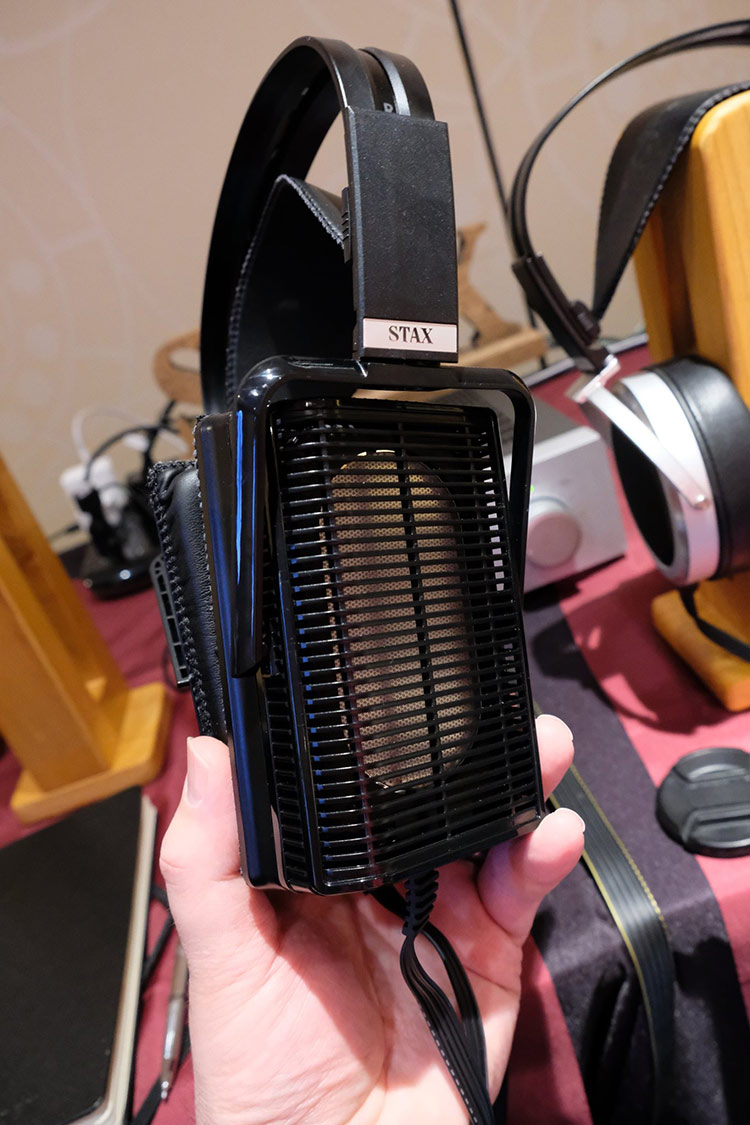
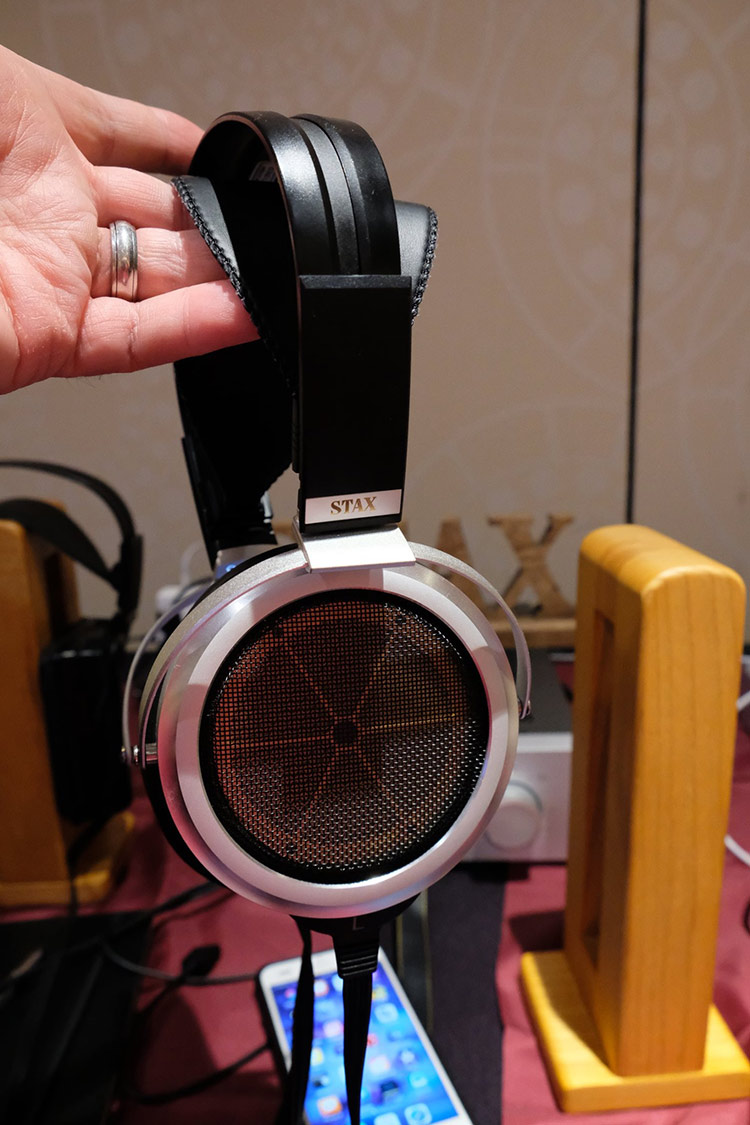
The fine folks at Astell & Kern always have something interesting to show whenever I run into them.At CanJam NYC they were showing off their new digital audio player, the SA700. Like all AK DAPs it feels solid in the hand and it features a design based on the company’s first DAP, the AK120 but modernized. It sports dual AKM AK4492ECB DACs, up to 32/384 PCM and DSD256 playback, MQA support, balanced and unbalanced headphones jacks and up to a claimed 8 hours of battery life on a charge. In the photos the display sample had the optional leather case on it. MSRP is $1299.00 and is available now. BTW, stay tuned to Secrets for my upcoming review of the AK T5p 2nd Gen headphones, coming soon.
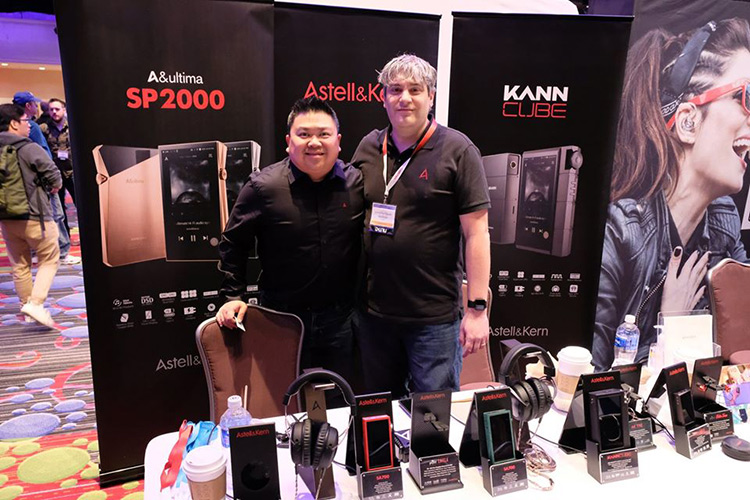
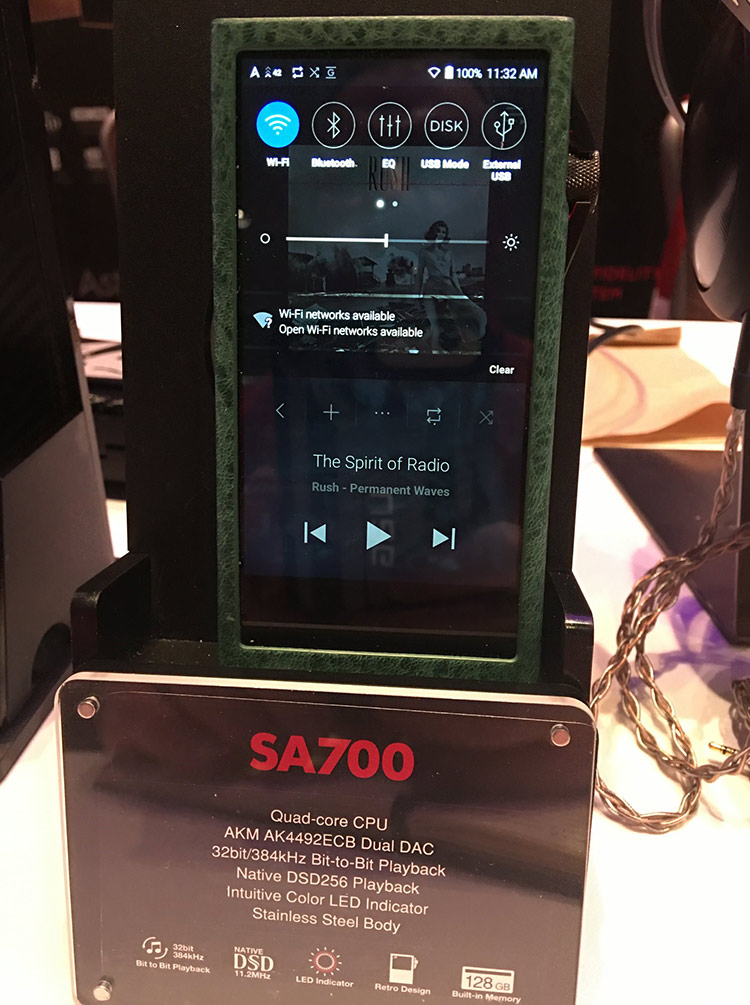
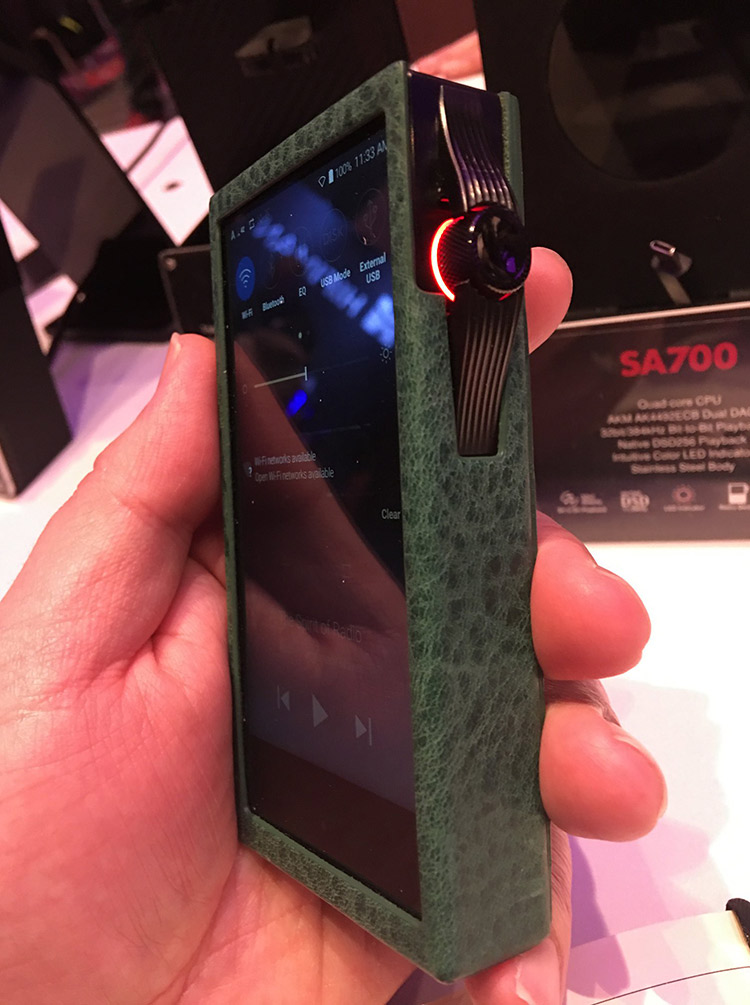

I loved what I heard from Meze Audio’s Empyrean headphones when I listened to them at RMAF, so I wanted to stop by their display booth at CanJam the to acquaint myself better with the Romanian companies IEM offerings. The RAI Solo is the company’s more affordable selection at $249.00. It uses a single dynamic driver in a specially tuned, brushed stainless steel shell. I found it comfortable to wear and easy to get a good fit and seal. The sound quality was full and detailed but perhaps a little bass heavy for my taste. The $1100.00 RAI Penta uses 4 balanced armature drivers and 1 dynamic driver with their output sent through 3 precision metal tuned ports. The enclosure is made out of CNC milled aluminum and the Penta is provided with silver plated copper cables with an optional set of balanced cables available. The Pentas were also exceedingly comfortable and easy to wear. The sound quality was vibrant and enjoyable with the wide variety of sample tracks that I used. Great imaging and detail too. Both the Penta and the Solo felt like quality pieces gear for the money. Would love to get these in for review!
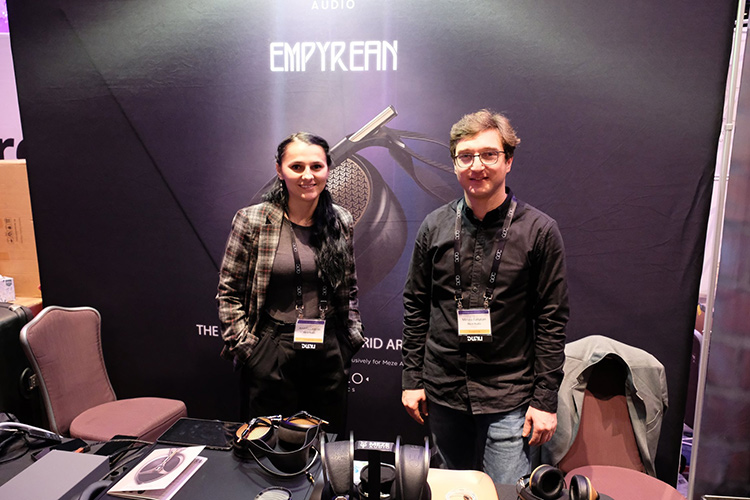
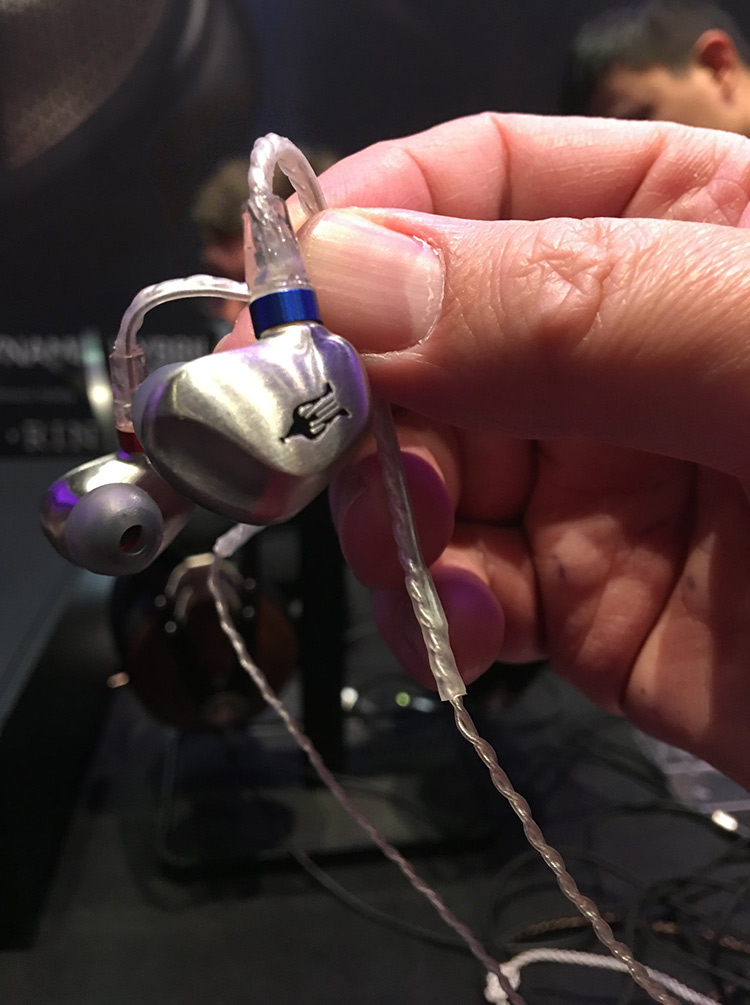
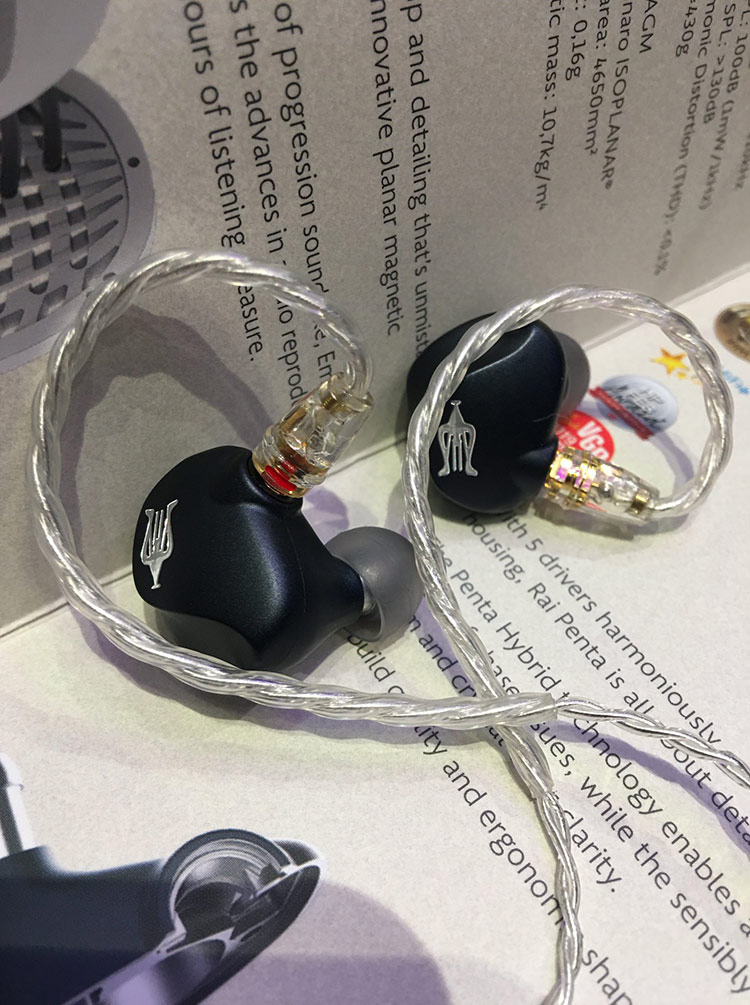
Shanling was showing their new M6 digital audio player at CanJam and as an owner of their teeny but capable little M0 DAP, I was curious to check the M6 out. The player felt solid in hand and had a simple, straightforward design and was an easily pocket-able size. The M6 has dual AK4495SEQ DACs, a standard headphone jack along with two different sized balanced jacks, aptX HD and LDAC Bluetooth, wireless connectivity, and claimed 12 hours of battery life with standard use. It can play up to 32/768 PCM and DSD256. With an MSRP of $499.00 it looks to be an enticing alternative to anyone looking for an affordable player.
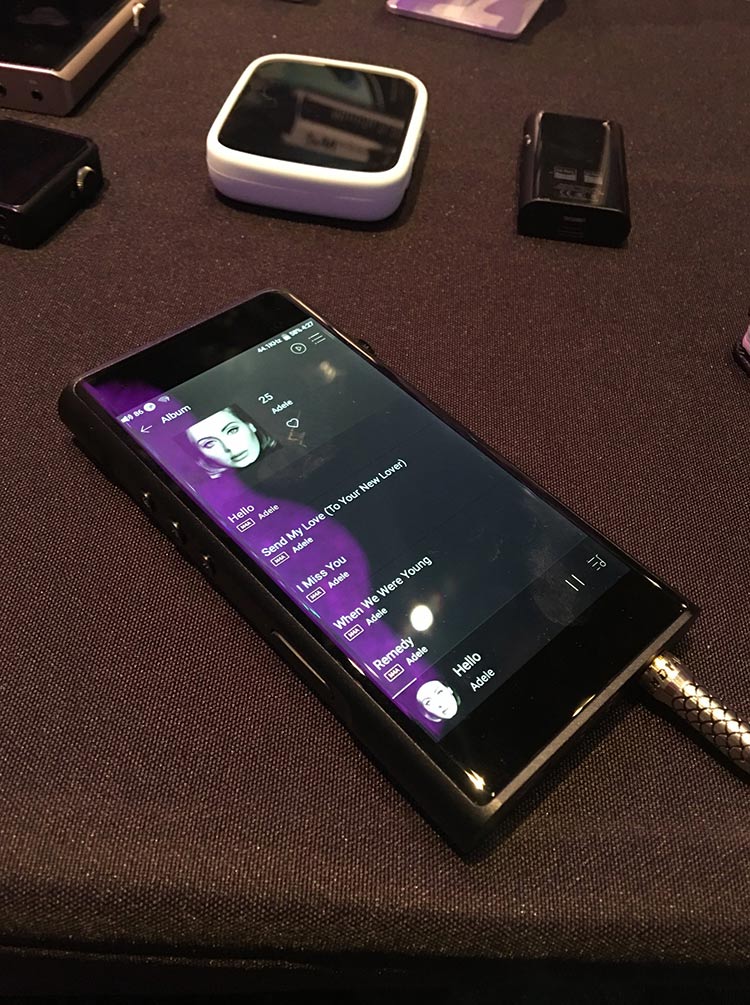

I think it’s safe to say that Benchmark Media Systems has a winner on their hands with their HPA4 Headphone Amp/Preamp. It is one of the cleanest sounding headphone amps that I have ever heard and it is impeccably well put together. Keep an eye on the Secrets website for my review of this great piece of gear along with their DAC3 B and AHB 2 power amp. Coming soon!
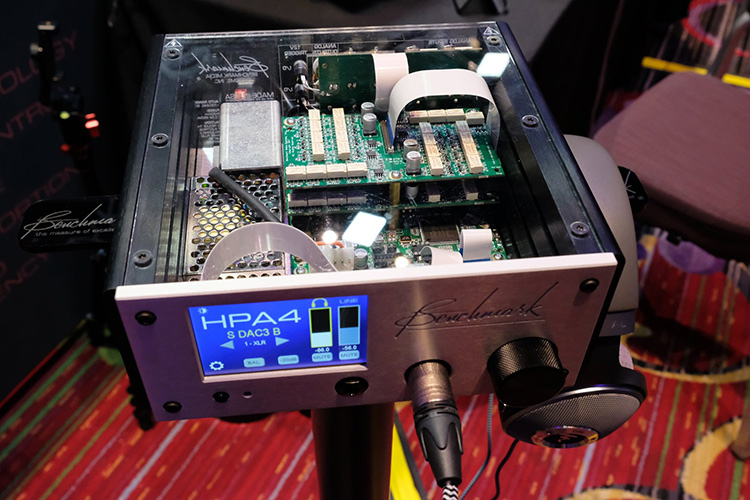
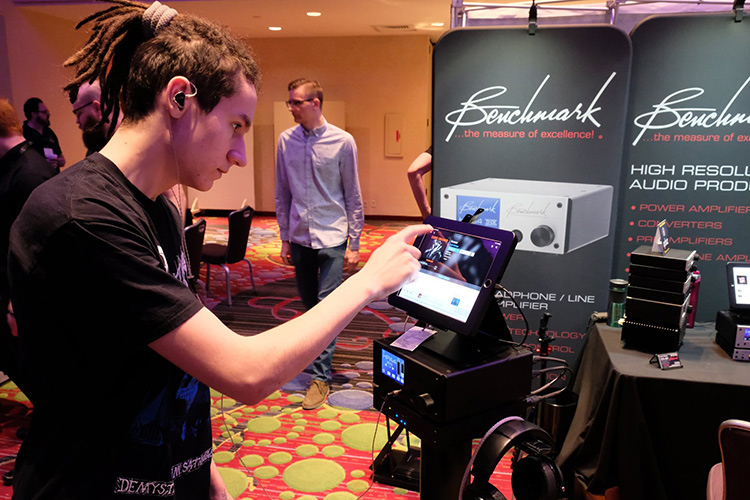
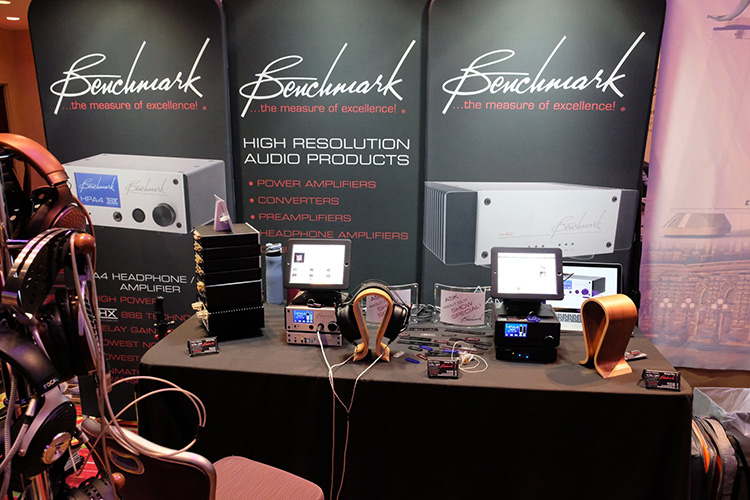
And now for a slightly different Perspective on CanJam NYC, The following next few posts will be through the eyes and ears of my teenage son and Secrets writer Peter Lo Raso.
Today marked the first day that I attended New York’s CanJam 2020 headphone show. After a free evening perusing the illustrious, shining city my dad and I arrived at the 6th floor of the Marriott Marquis hotel in Times Square and we immediately encountered a wide selection of different headphones, in-ears, amplifiers, and everything in between to sample. The Focal stand was the first one I visited, largely due to its size and proximity to the door. After an informal chat, where I received approval from one of the company reps about my Dead Kennedys shirt, I tried out their Clear and their Elegia over-ear headphone models. I found both to be an encouraging start to the show. The Clears, like their namesake, produced a clean sound with a slightly more present low end. My notes describe the sound as “padded,” similar to how a well-soundproofed studio would sound. The Elegias sounded a bit more open than their kin, and with a focus that shifted towards mids rather than lows. I found my head nodding as Ho99o9’s Cyber Warfare blasted through them. By my standards, incredibly nice headphones. Both were decked out with Focal’s own headphone amplifiers, which the rep enthusiastically praised for their ability to synergize with any given Focal headphones that they were paired with. The amplifiers have a bank of presets built-in, one for each model that the French company produces, and the addition of new models is as simple as a firmware update. Slick.


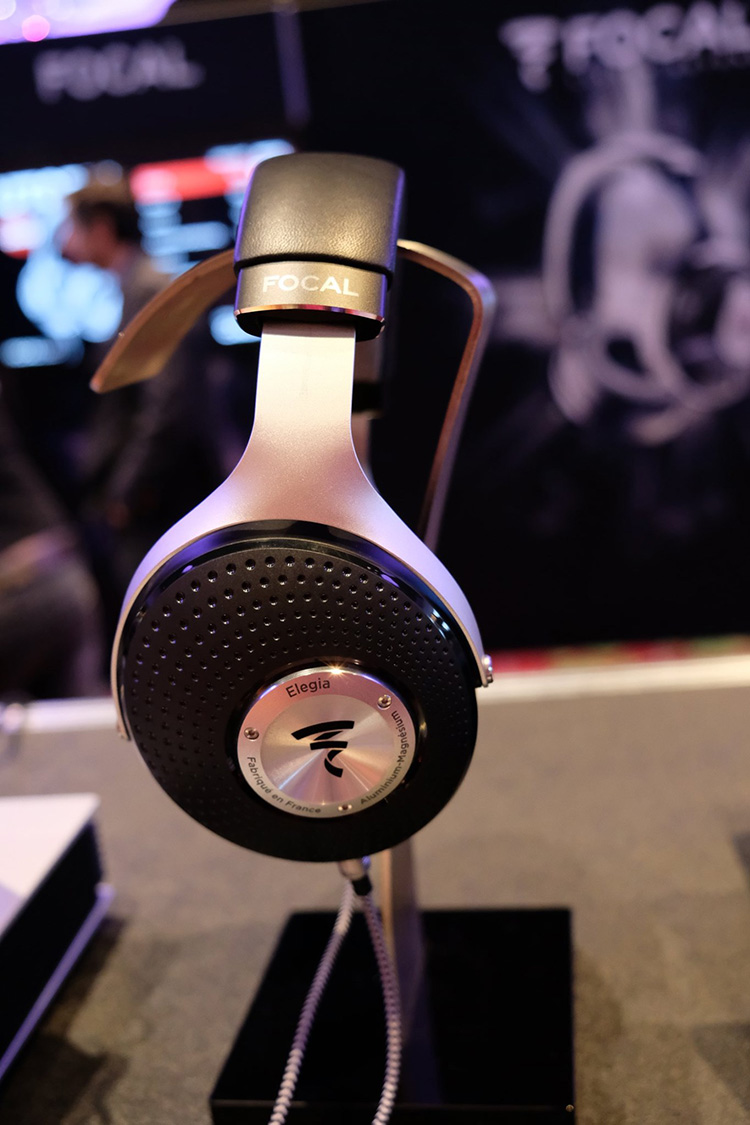
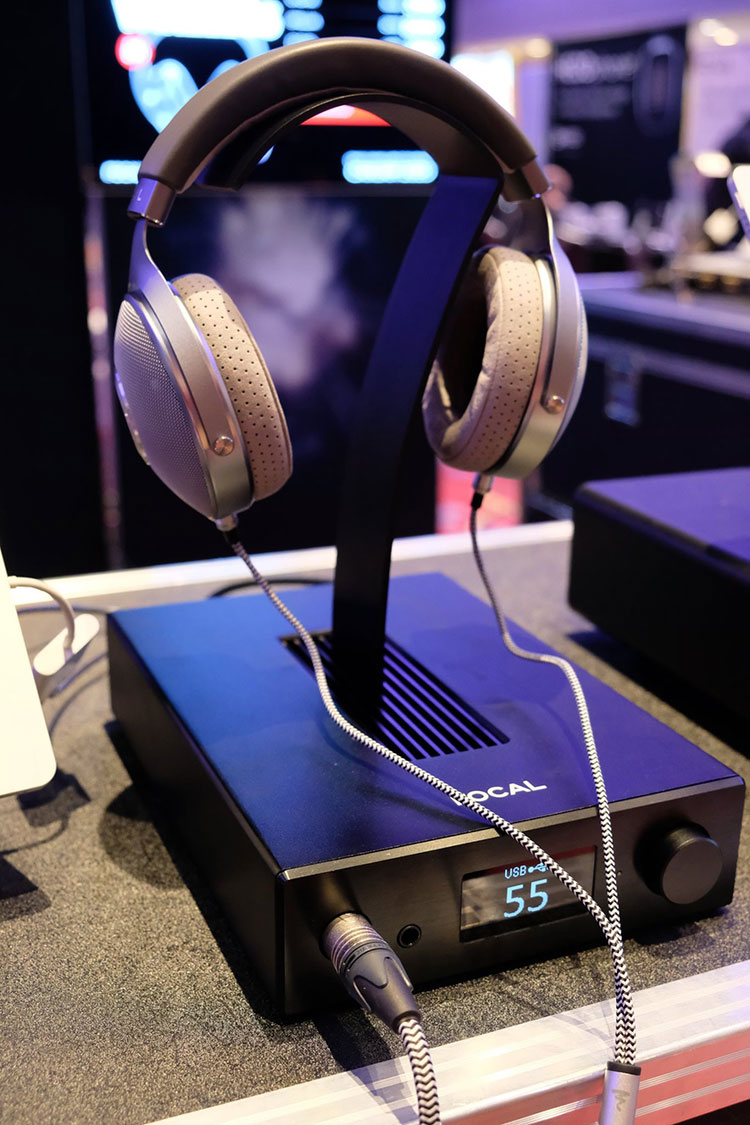
My eye was drawn next to the RHA booth, largely due to a glimmer of familiarity that I saw in their banner. Their TrueConnects seemed to hearken back to Apple’s infamous AirPods. That isn’t an insult, by the way, the TrueConnects performed far better than the little white bean-shaped gremlins. After seeing so many students in my high school walking around looking like they had milk dripping out of their ears, the sleek design of these appealed to me, especially because they came in black. The TrueConnects played Dealer’s new Saint EP in glorious fashion, with strong mids and formidable highs to accommodate all the guitar squeals. The two reps that were present spoke with a thick Scottish twang and were eager to share their product, also possessing other, wired in-ear models. Despite the small footprint that the booth took up, RHA stood out to me.
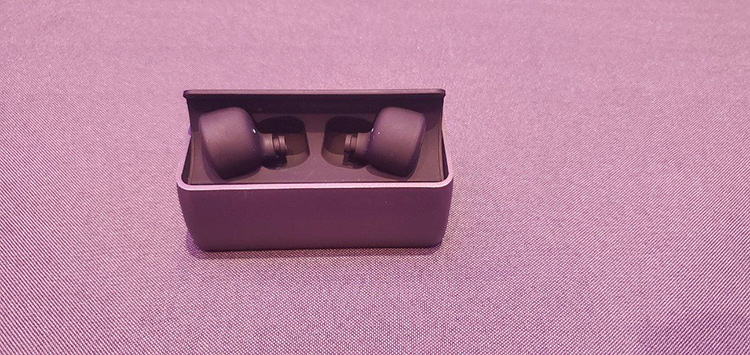
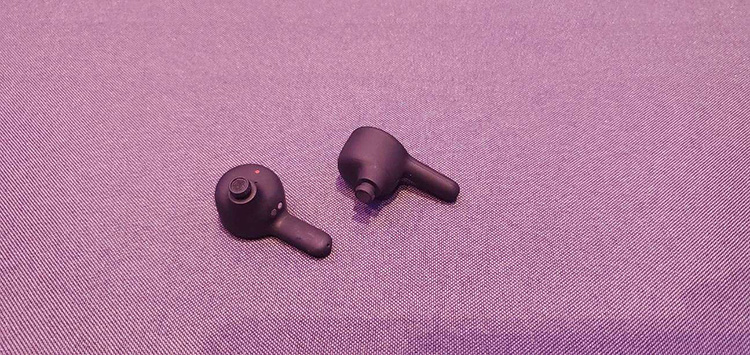
Among other standouts from the first day were MMR with their Homunculus in-ears, which were possessed of some unique design and boasted deep, deep low end; Jerry Harvey’s Roxanne model played host to a feature that I had never seen before (perhaps due to my use of fairly run-of-the-mill earbuds up to this point) – a variable bass system that was adjustable with a tiny screwdriver, which proved to be both novel and eerily effective in adjusting the bass for one channel at a time; at the AME stand I was recommended the Gravitas model due to my music tastes, and these earbuds shone above the rest to me, chanting Irkallan Oracle’s slow and crushing weight in an ominous display of power; and finally, Empire Audio’s Bravado in-ears, which evoked feelings of listening to a concert with their more open sound and strong low end, as well as their comfortable fit.
I intentionally made a point of canvassing the show today without spending too much time at one booth or another, in order to both get my feet wet with my first proper audio show and to get a sense for which companies offered something that appealed to me specifically. I will definitely be revisiting AME, MMR, and RHA’s booths tomorrow, as well as taking a closer look at a couple of booths that I missed. There is much more to see.

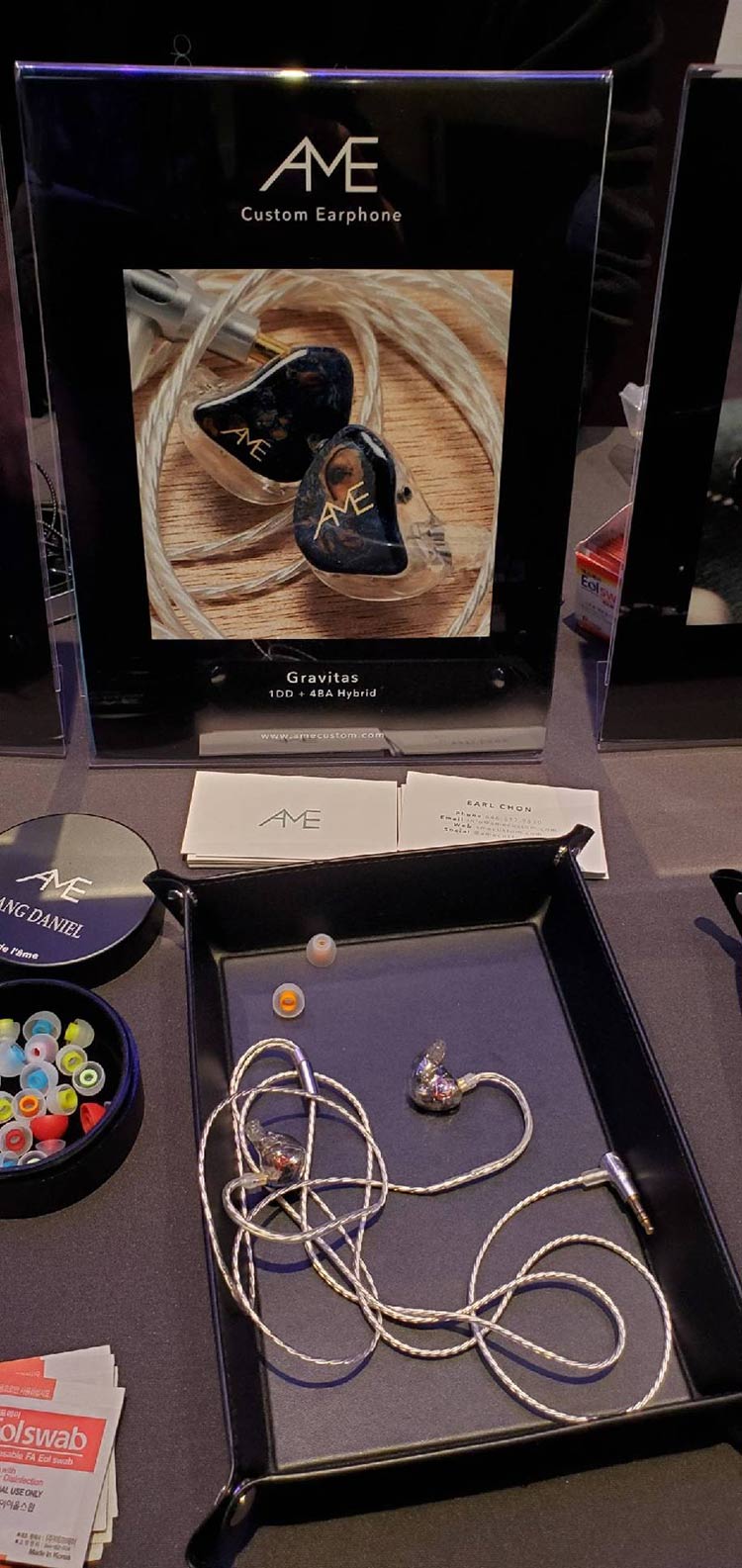
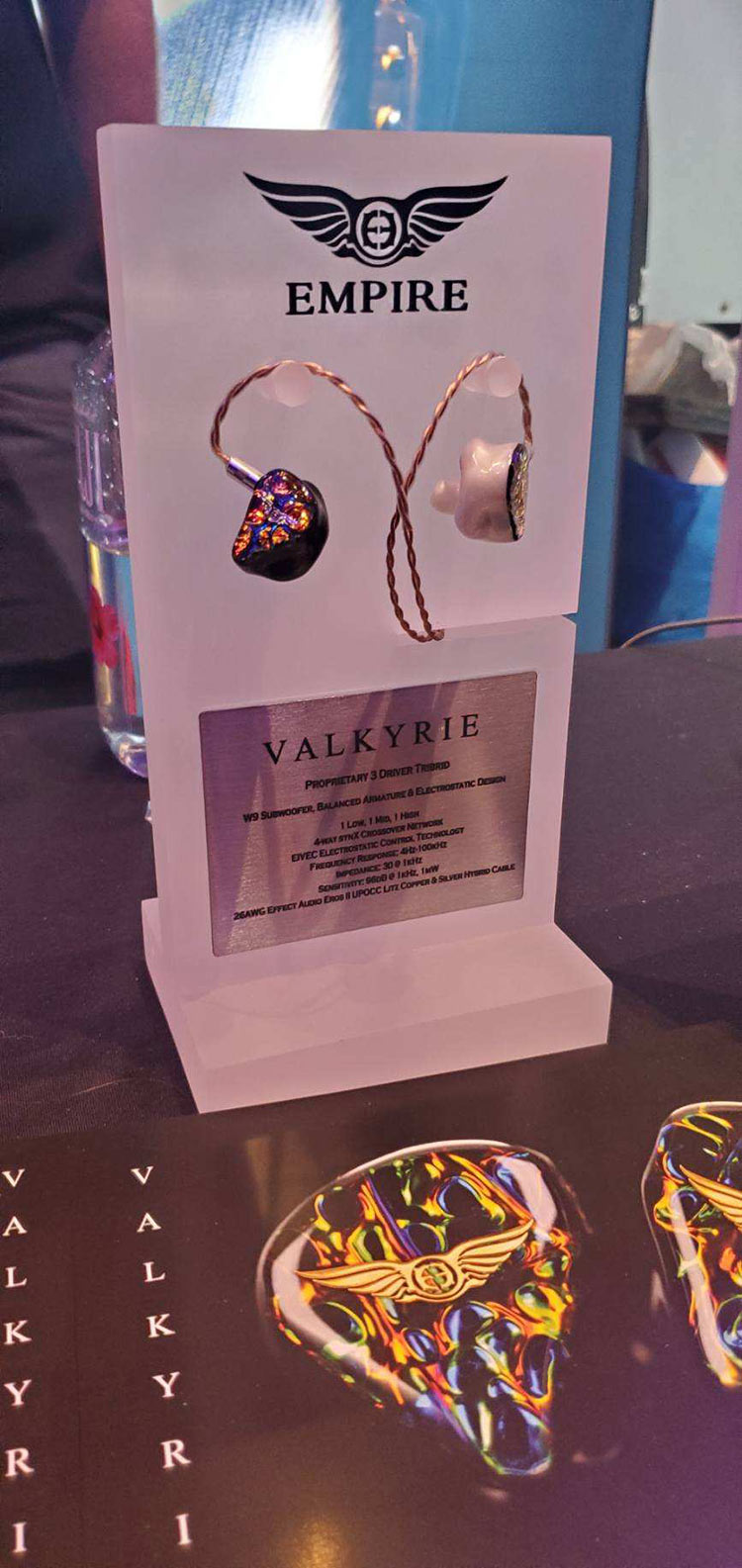
After returning to the show on the second day, my first order of business was to return to Empire Audio’s stand to take a closer look at what they had to offer. A short conversation with the man behind the table ensued, during which we discussed the different schools of thought when it comes to a metalhead’s preferred sound for in-ears. According to the fellow, on the one end there are those who prefer clean and clear sound to best portray the technical aspect of metal – double kick drums, sweep picking, et cetera – and on the other there are those who purely prefer earbuds that are conducive to high energy listening. The man withdrew a pair of dark-colored earbuds, informing me that these conform to the former doctrine. He also noted, in passing, that these earbuds are used by Chris Adler, drummer (now formerly) of Lamb of God. This caught my attention, and I was eager to give these a listen. As he stated, it was easy to make out each little detail of Code Orange’s new single, “Swallowing the Rabbit Whole.” The work of their new drummer stood out, true to the word of the rep, but this did not detract from any other aspect of the sound. No member of the now six-strong band was left out.
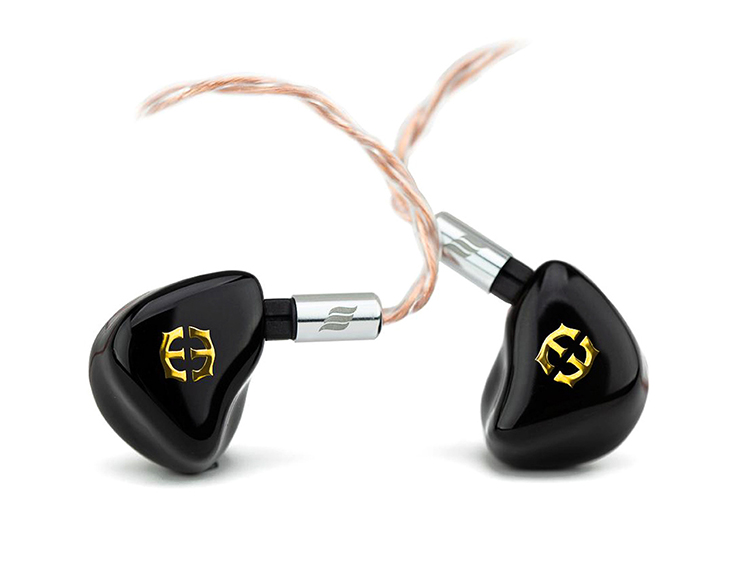
After this, I perused the booths on Empire’s side of the room, and my attention was drawn to a peculiar looking amplifier. Large parts of it remained entirely clear, exposing the inner workings of the device. As I sat down, a fellow festival-goer eagerly explained that this was the Audiovalve Solaris, a “swiss army knife” amplifier which is able to act as both a headphone amp and a speaker amp, an ambidexterity that is backed with myriad features (each of which uttered too fast to discern). He then directed my attention to the fellow sitting behind the table, an unassuming man who turned out to be the engineer of this amplifier. The man spoke with a heavy German accent, and pleasantly remarked as I left: “Do not forget to write this! Have a good day!” The words “German engineering” alone carry great weight, as they represent decades of innovation and precision. This amplifier was no different. It was clear to me that the device was capably powerful, yet it recited the gentle guitars of “Brothers in Arms” with grace. Not to mention the design of the device itself, which gave off a sort of pulp sci-fi aura. All parts of the sound had their day in the sun, and I found myself lost as the enthusiastic silver-haired man beside me tried (and failed) to regain my attention.
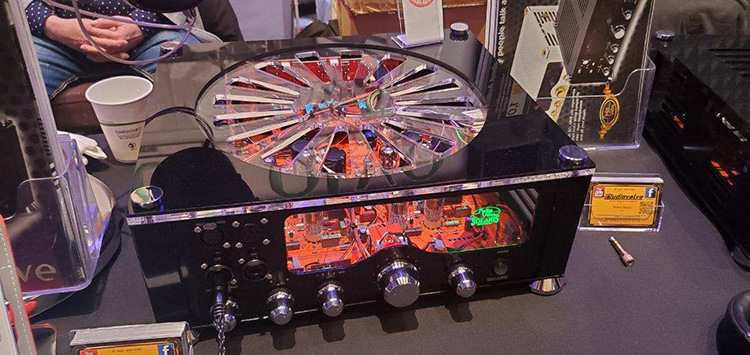
After the firm handshake from the German fellow, I arrived at the Fostex, and Benchmark stands. At each of these I was presented with formidable products. Fostex showed me their TH-900mk2 headphones, which produced a sound best described as “tabula rasa.” The sound was not tinny, thin, or unpleasant; it was also not especially deep or full. I would consider these headphones a reference point for all the colorful language that audiophiles use to describe sound. I was then moved over to their wireless TM2 earbuds, which turned out to be modular. The Bluetooth unit itself could be disconnected or reconnected to different plugs, as the rep called it, and he demonstrated by removing the stock plug and replacing it with a clear one made by Shure. These, despite having an over the ear design that goes against my preference, demonstrated a solid sound supported by a strong low-end base that was surprising from the decidedly small units. At Benchmark’s stand, I tested their HPA4 preamp/headphone amp. The in-ears that the rep handed me were given more body when connected to the device and the noise that I experienced with them was reduced drastically. The sound was smoothed out and made more enjoyable.


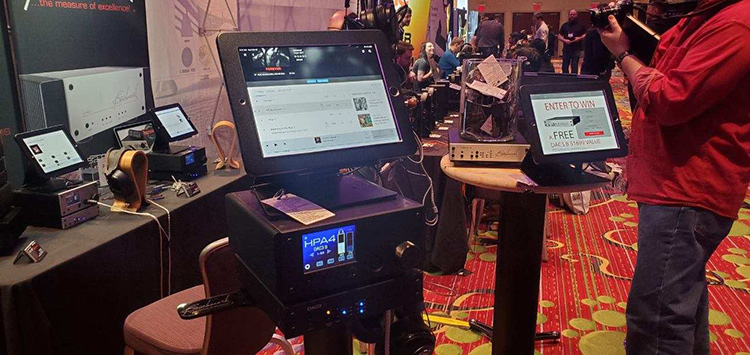
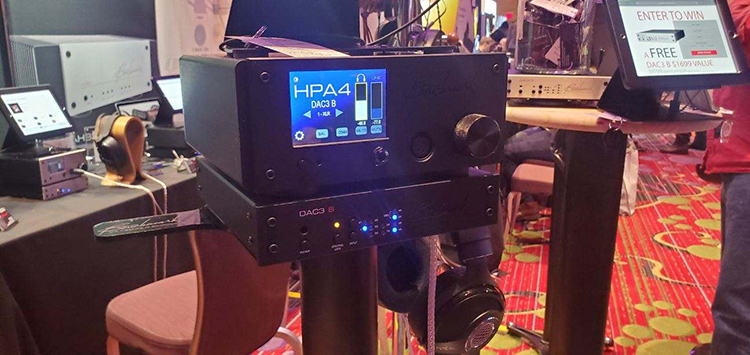
I moved on to the HiFiMAN area after this and was greeted cordially by one Adam Sohmer, who was introduced to me by my father. Adam gave me a look into HiFiMAN’s Bluetooth headphone options, first demonstrating the capabilities of their Ananda model and then their Deva. The Anandas provided a clean fan of tones, connected with no issues, and remained exceedingly comfortable while I was wearing them. The sound was crisp, and no one end shone above the rest, all worked in unison. In contrast, the Devas provided a sound that, while similar, was a little more muted when compared to the Anandas. In addition to this, I noticed that the low end popped out drastically more than it did on the Anandas. I can only assume that this is representative of the lower price point, but the value on the Devas still goes a long way, as HiFiMAN is known for. The removable Bluetooth/DAC/AMP module of the Devas, so they could be used as standard wired headphones, added to their flexibility.
